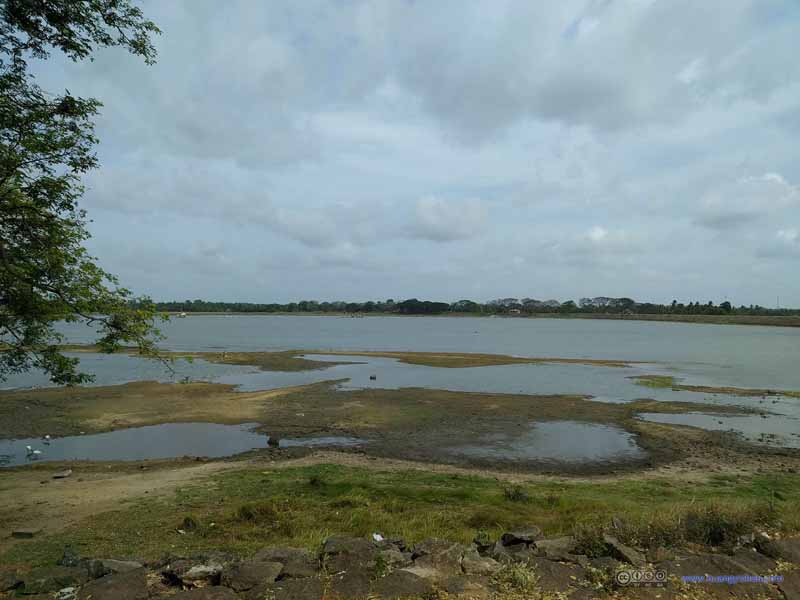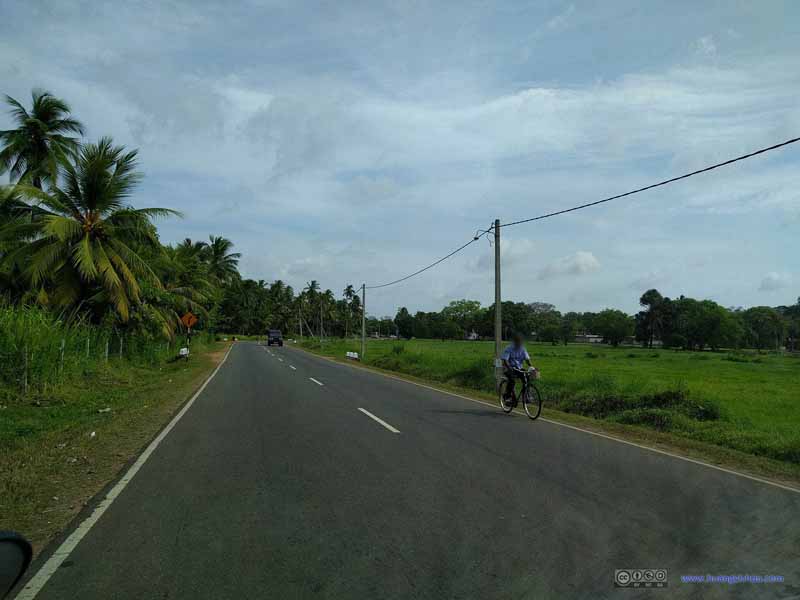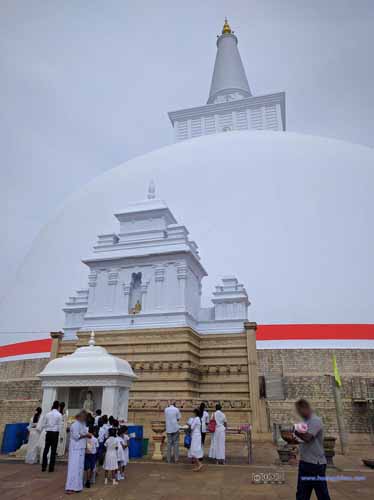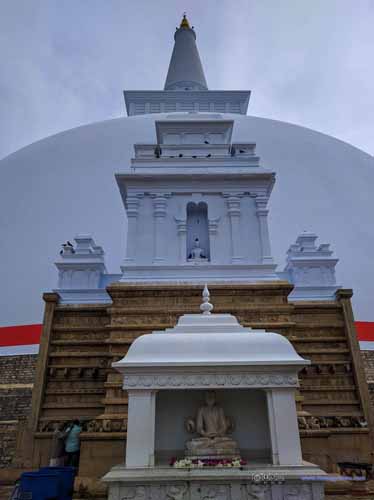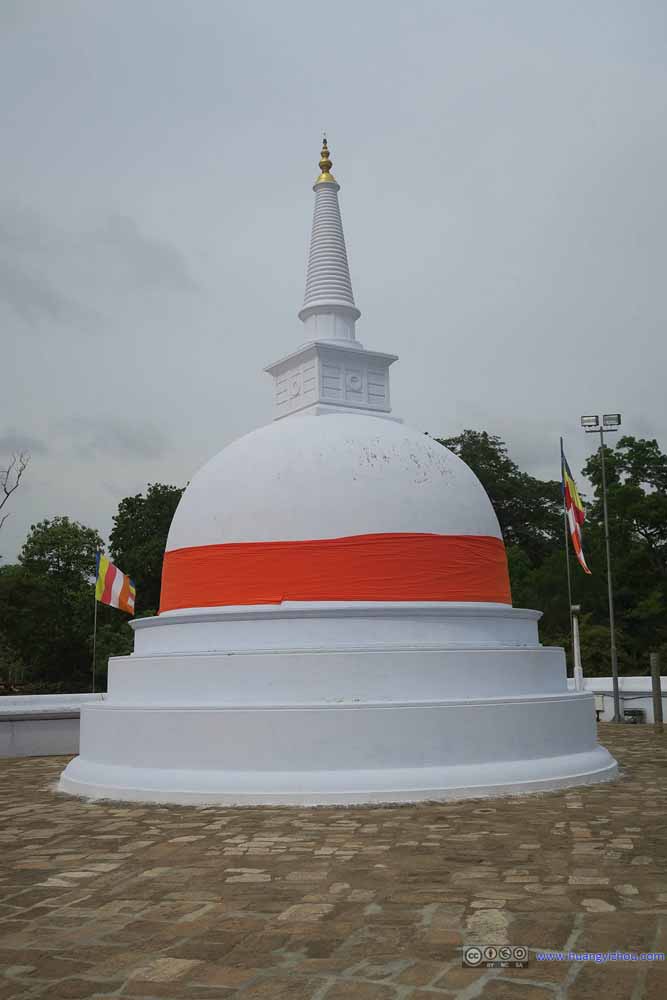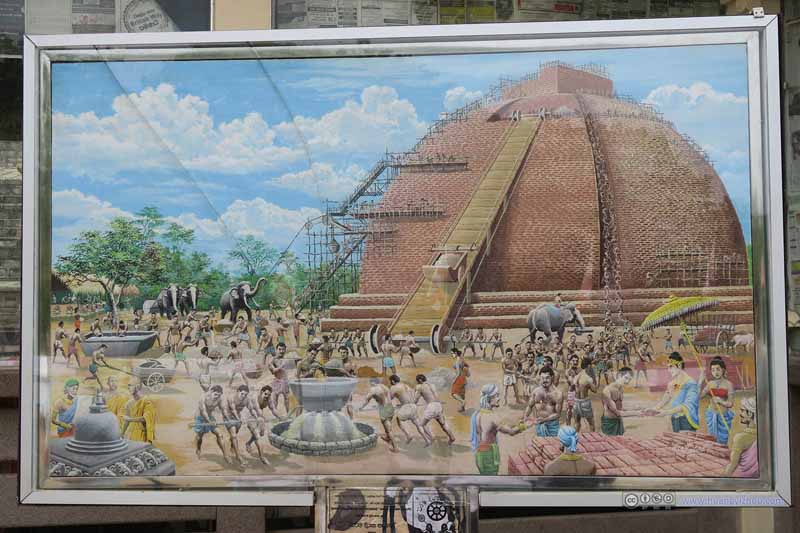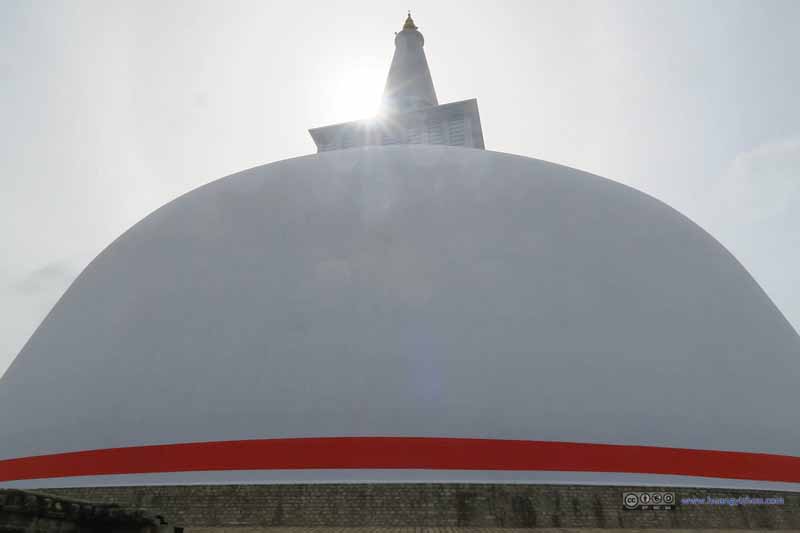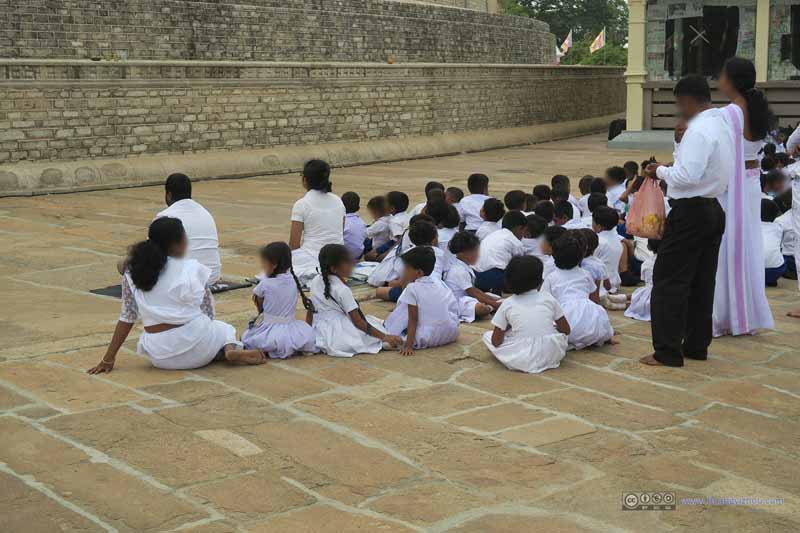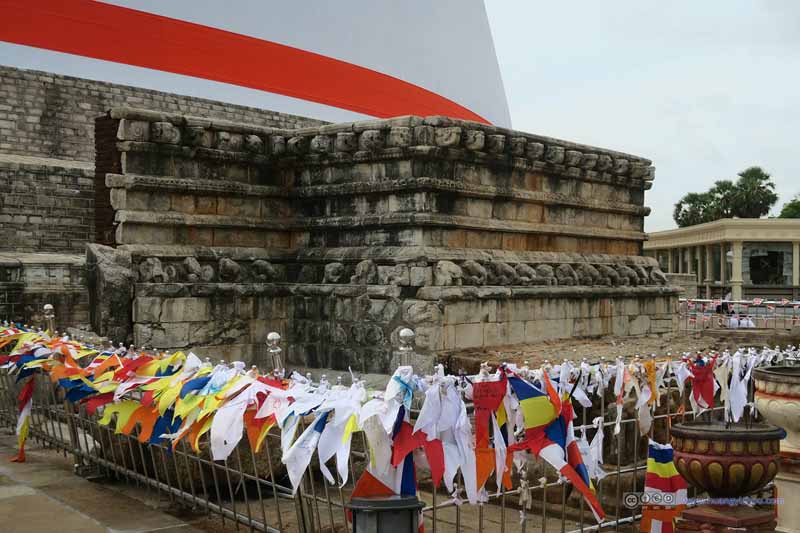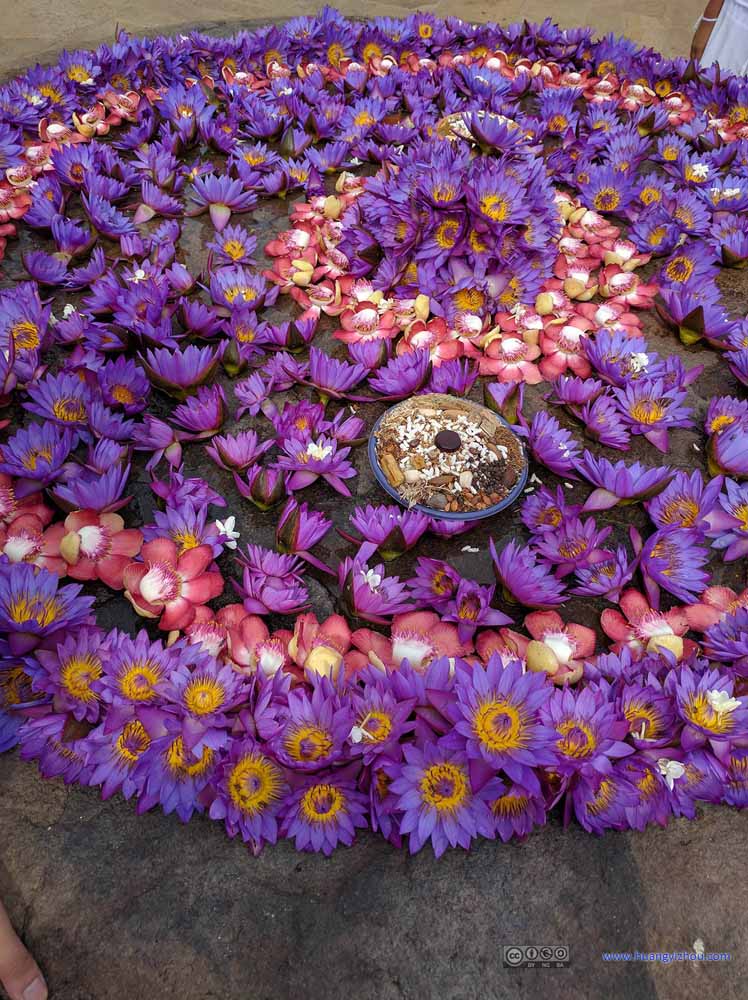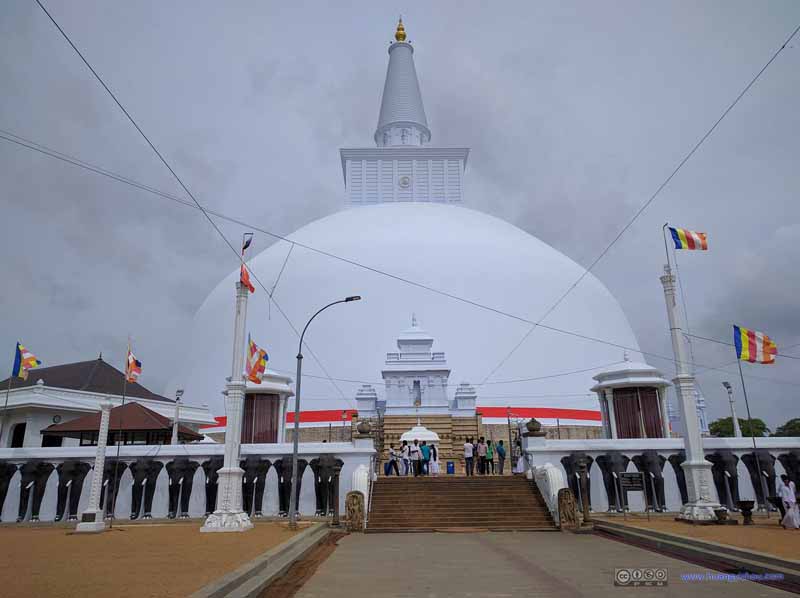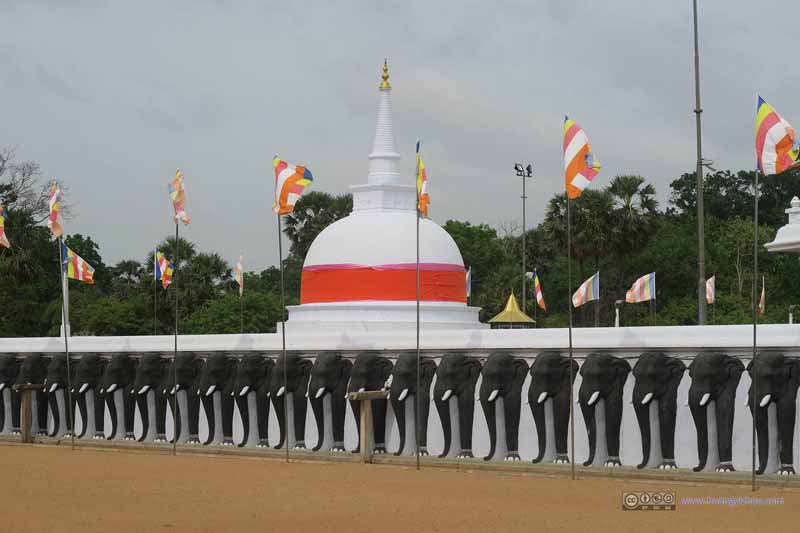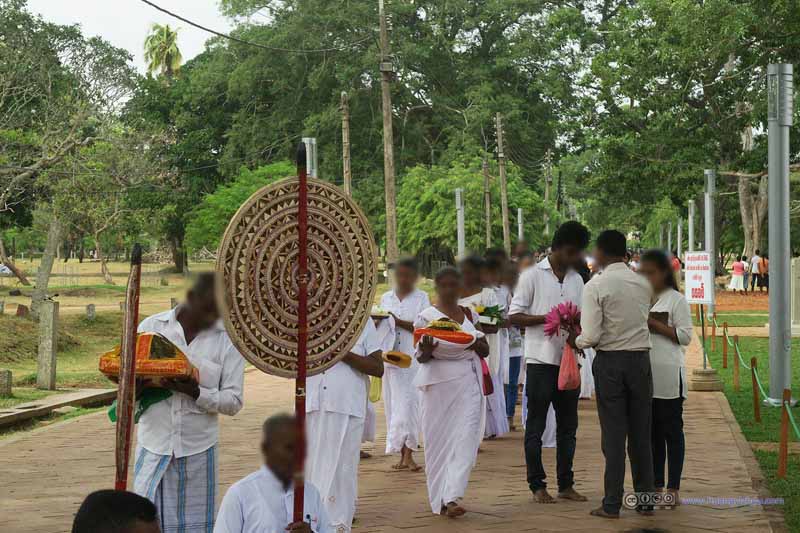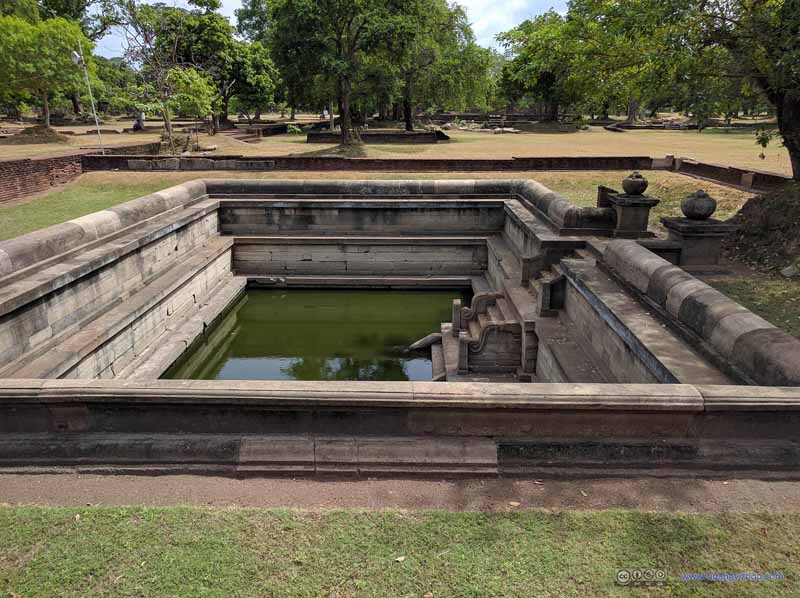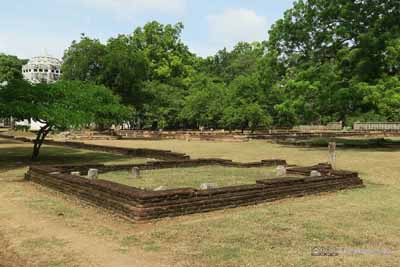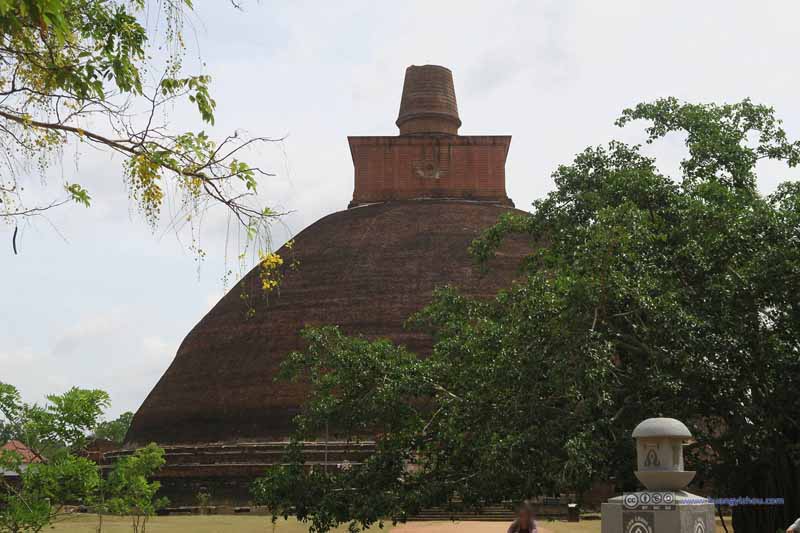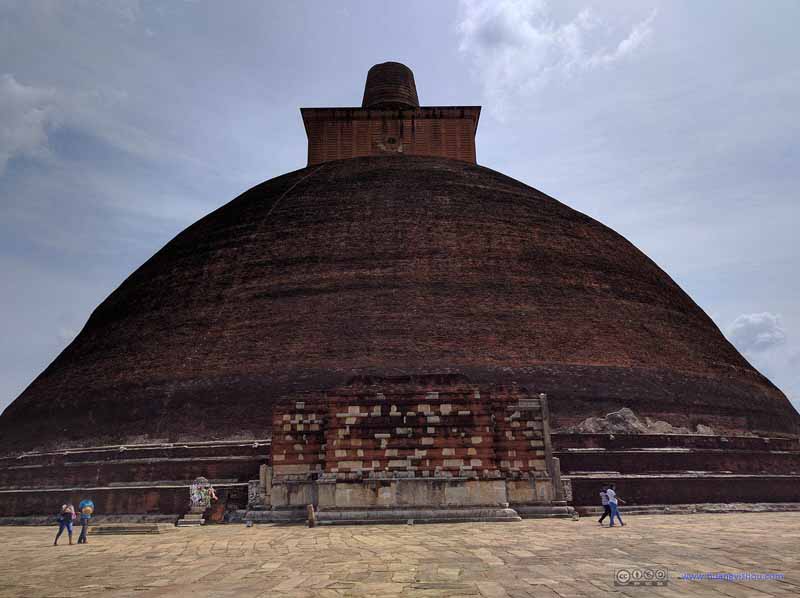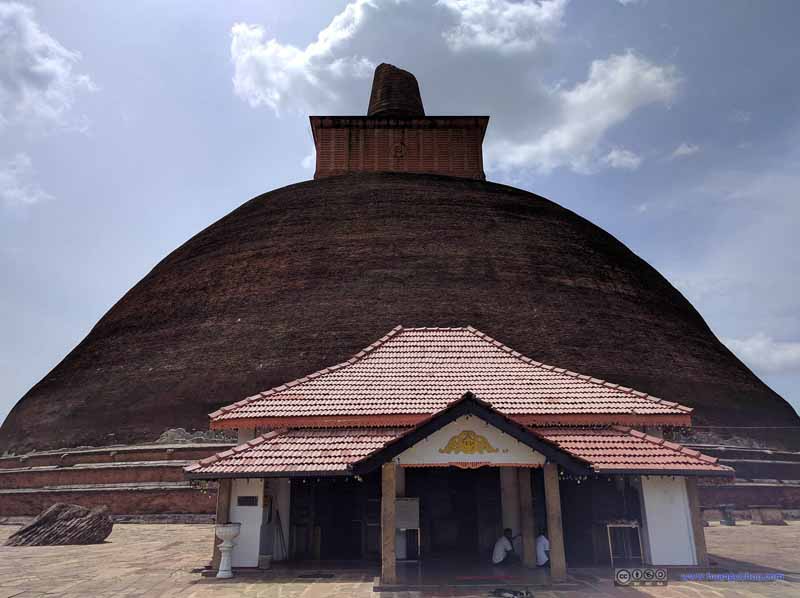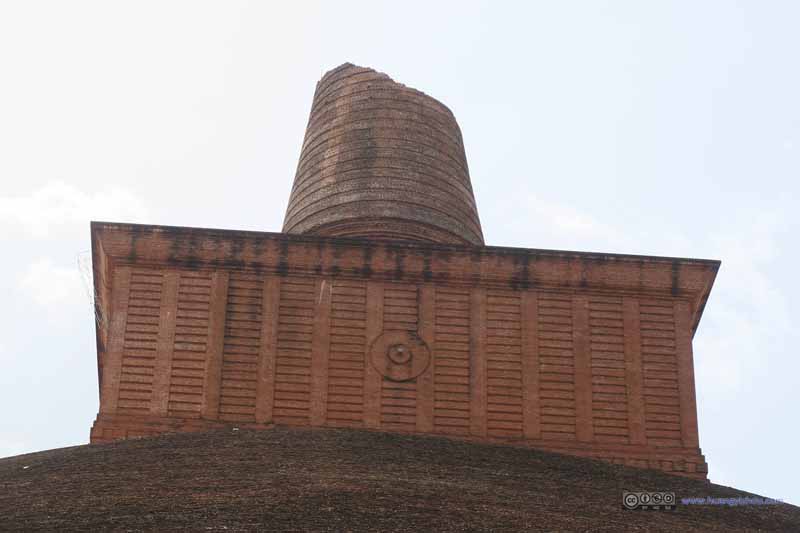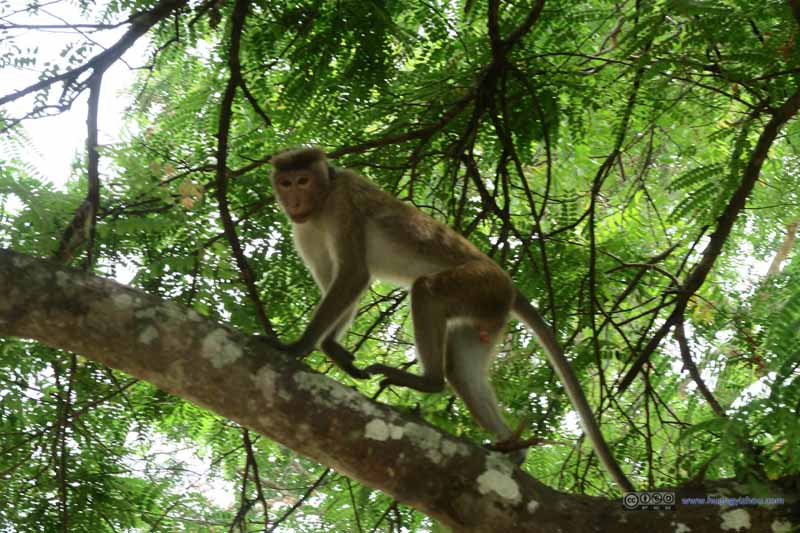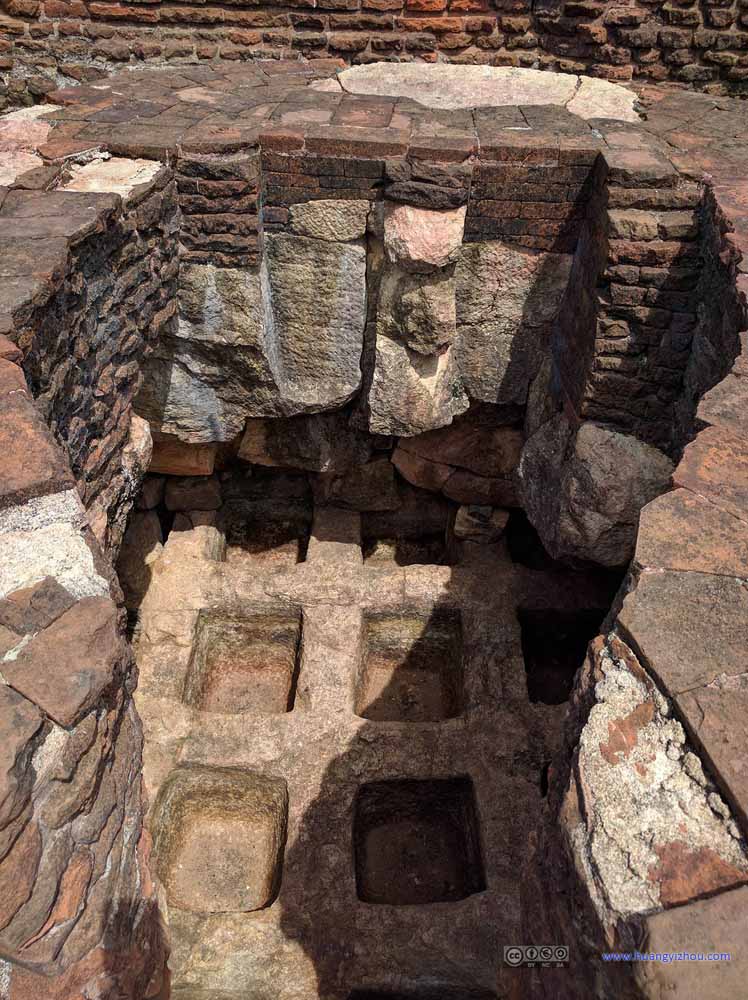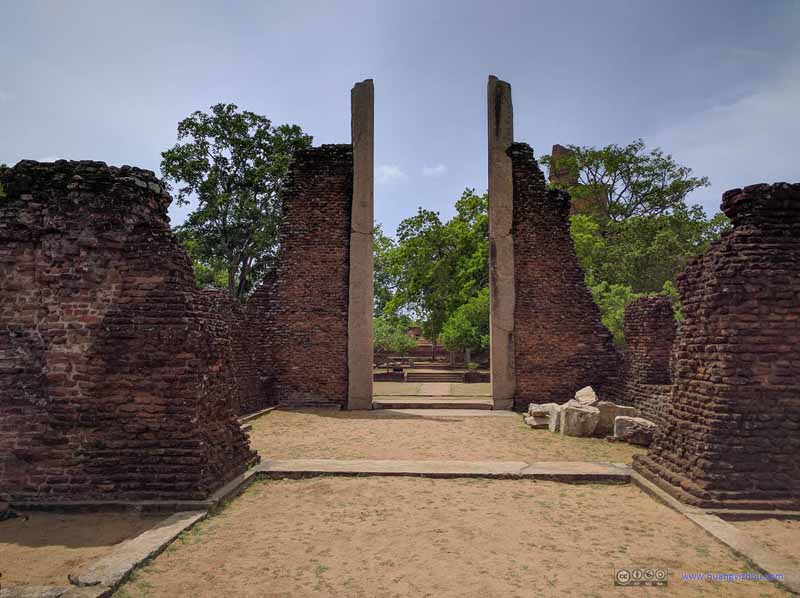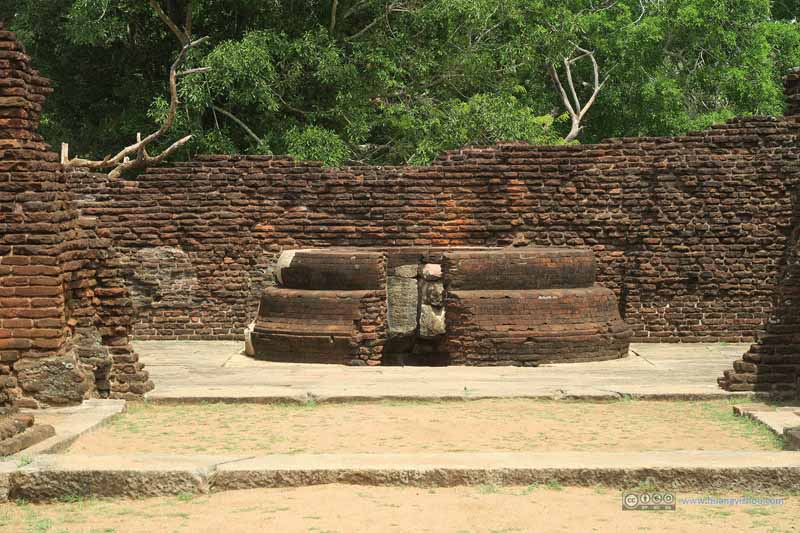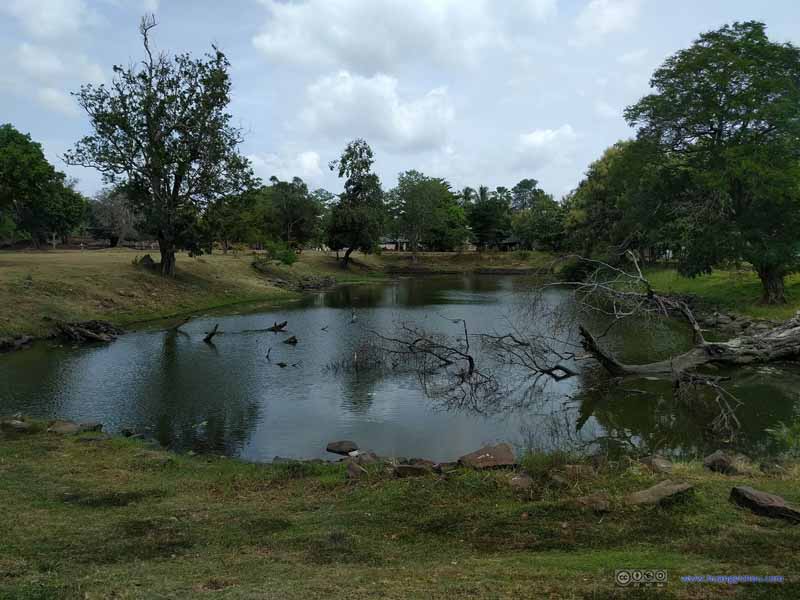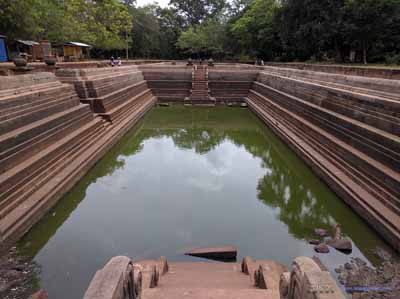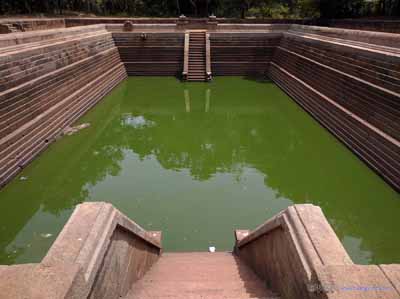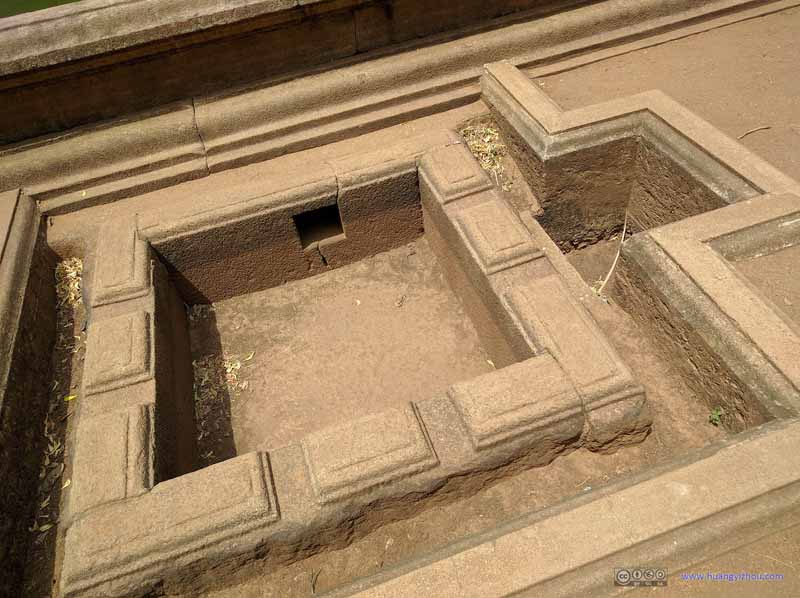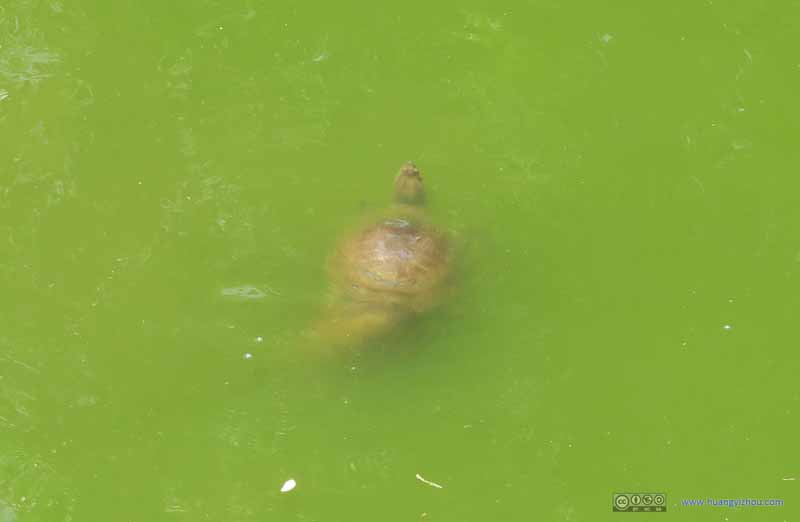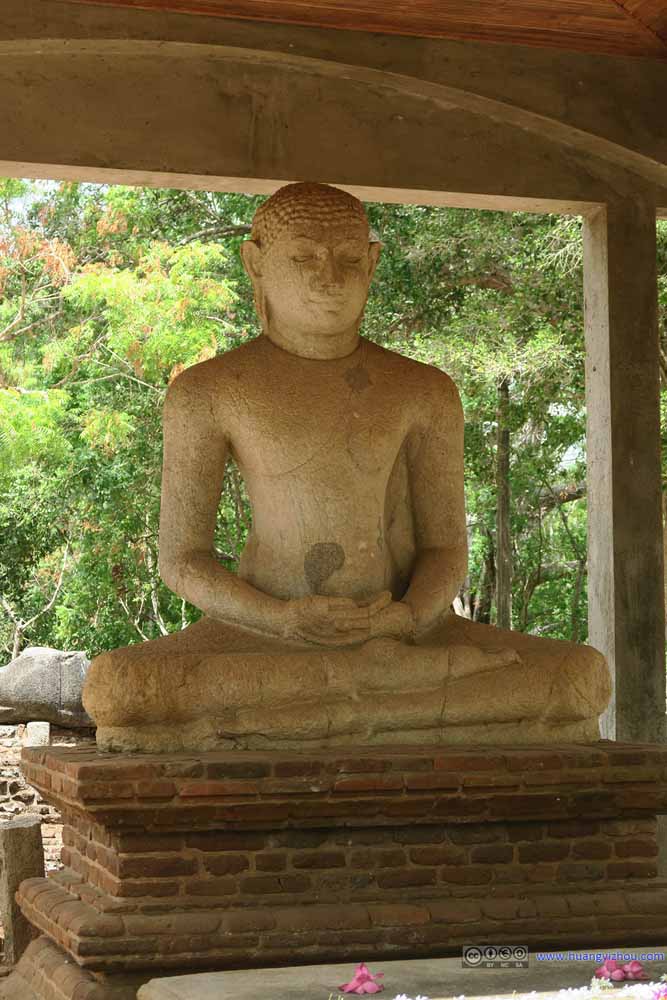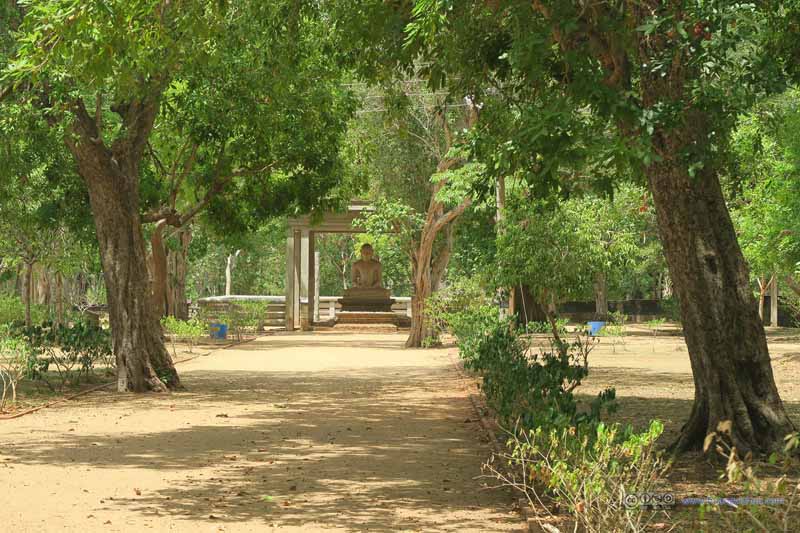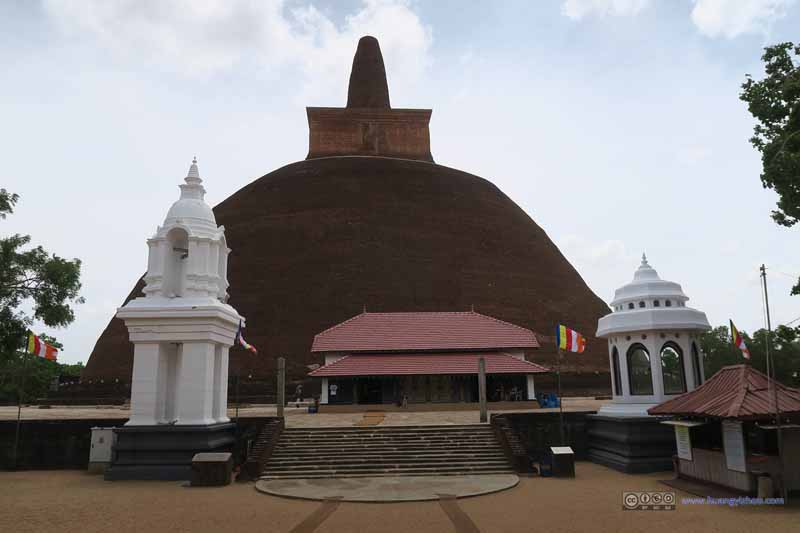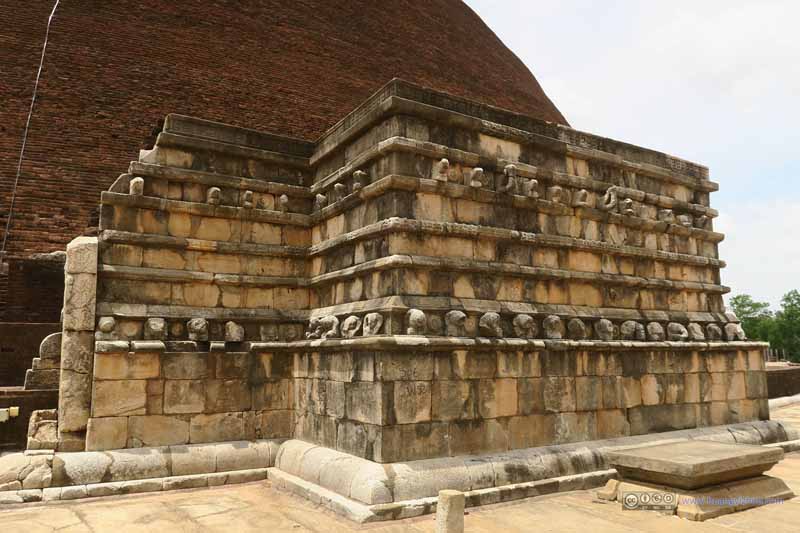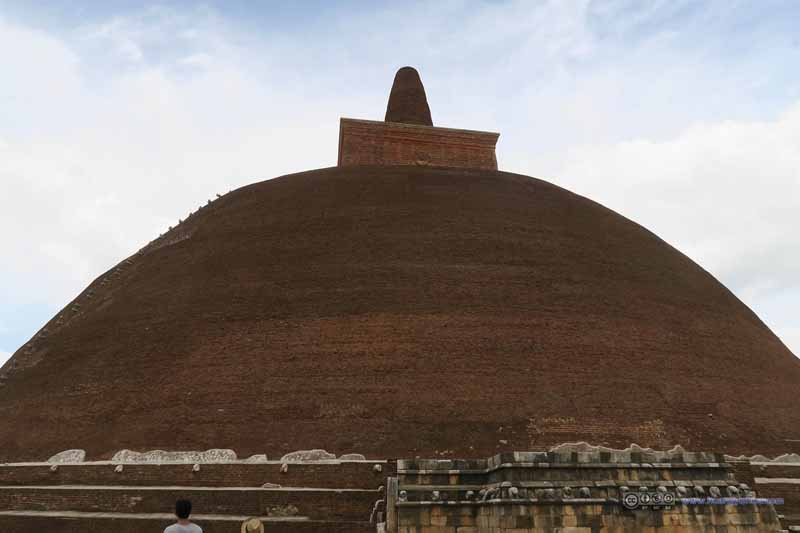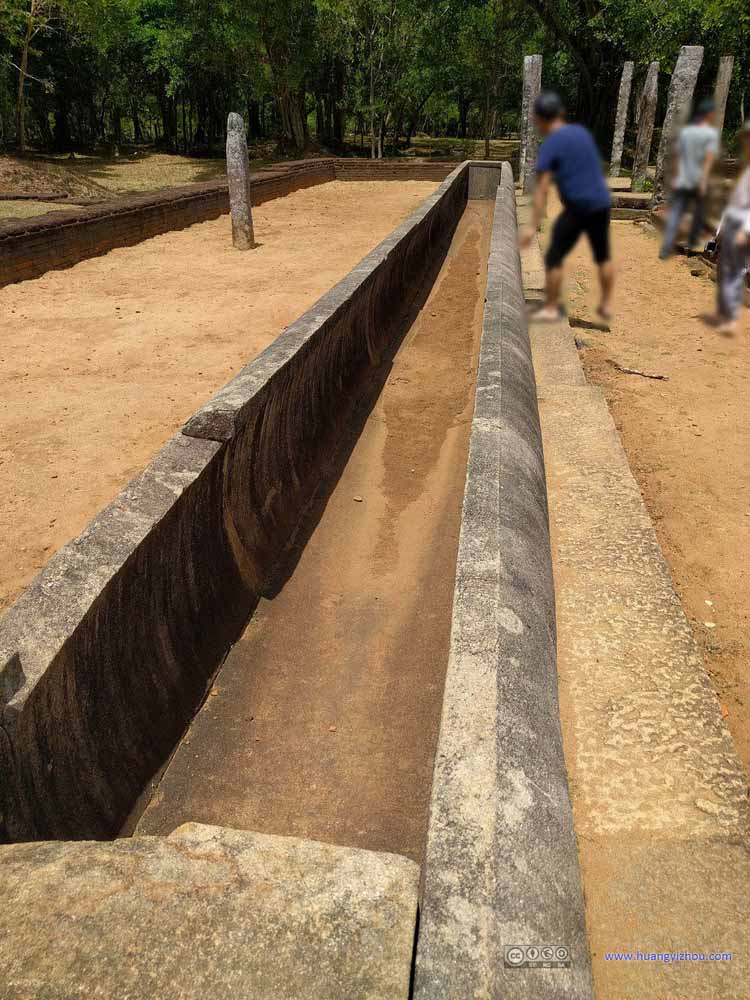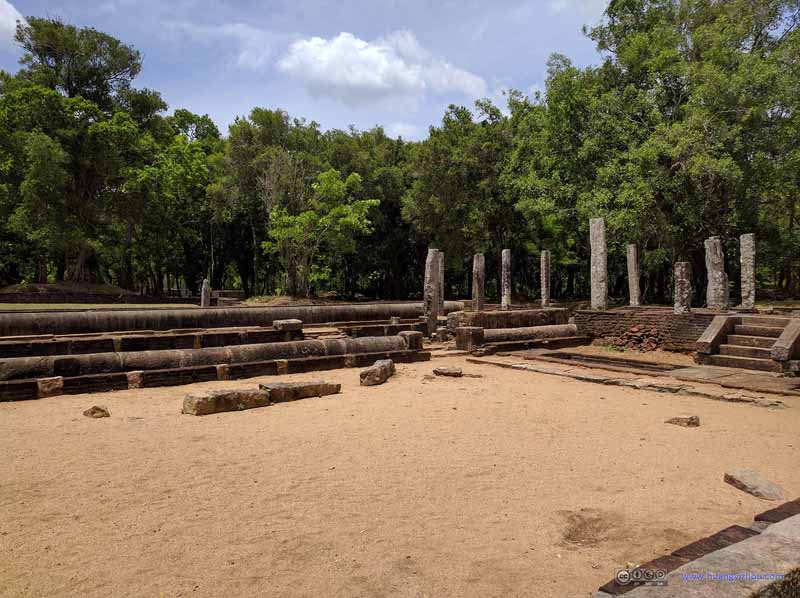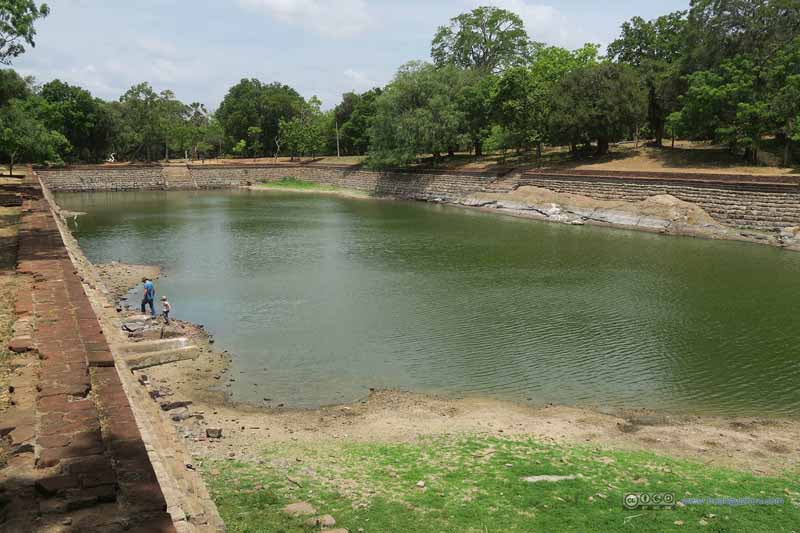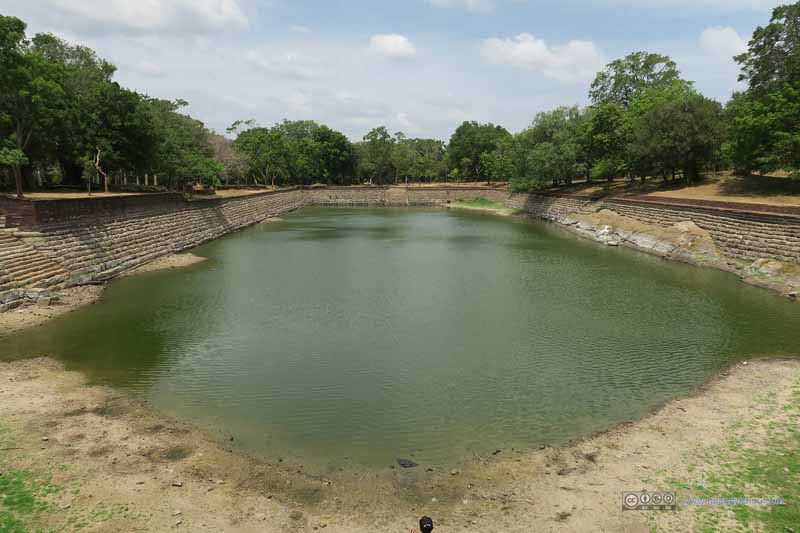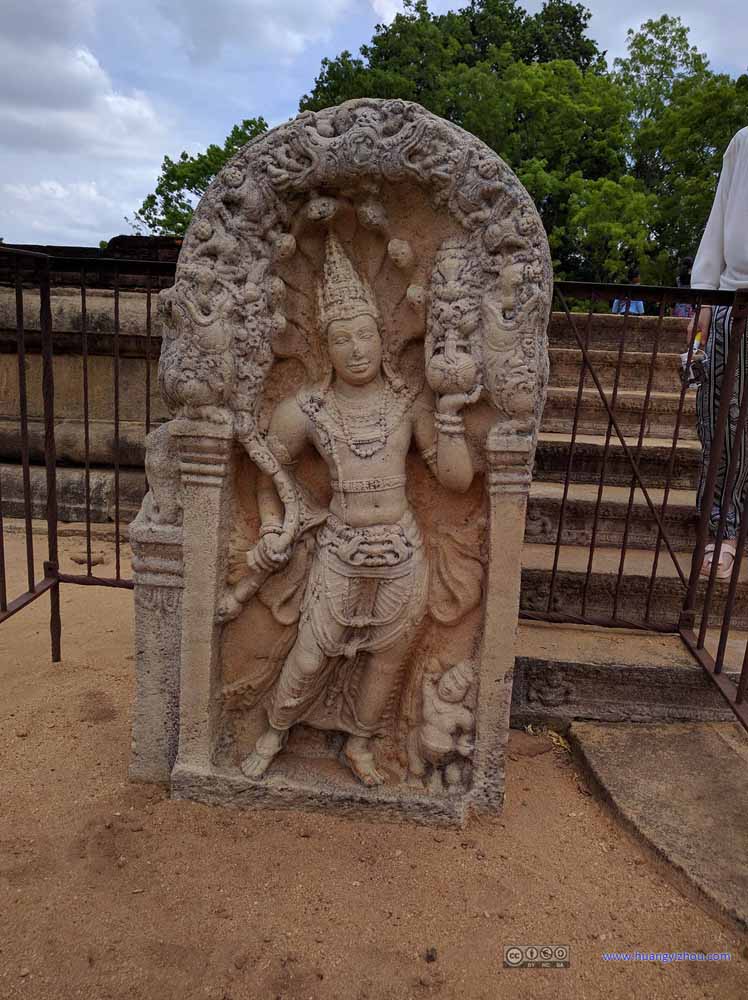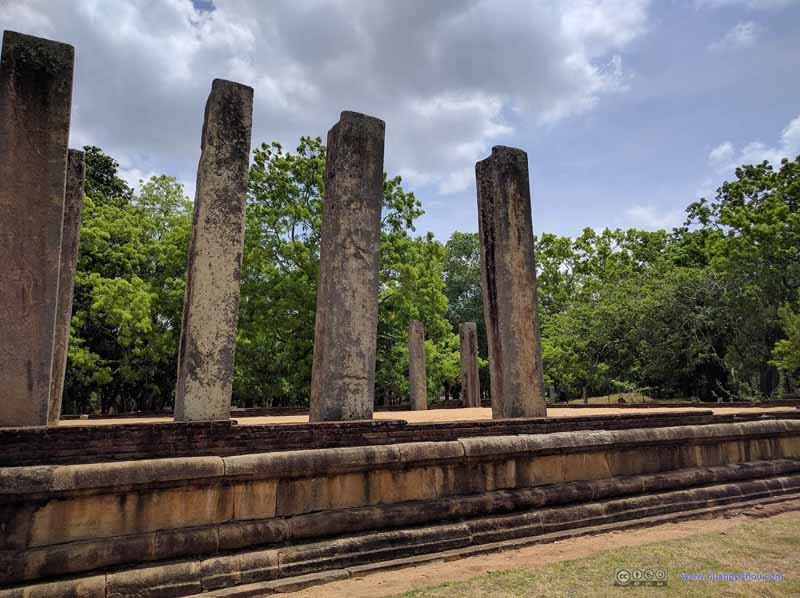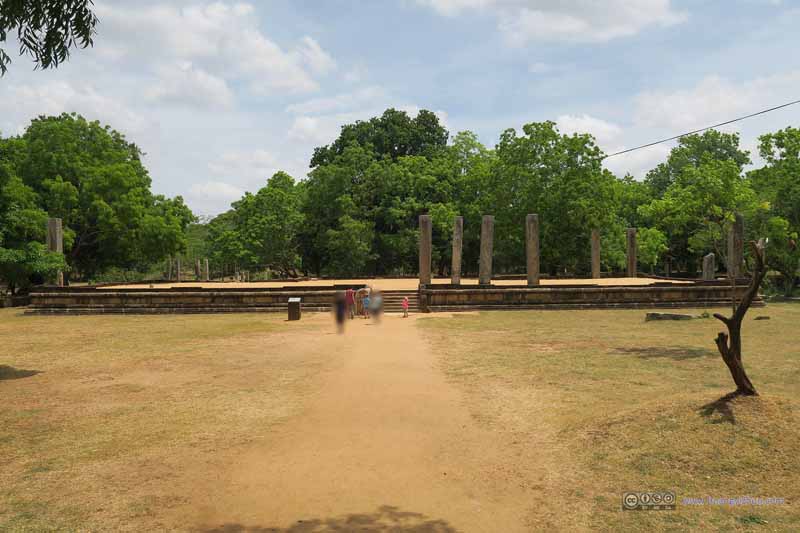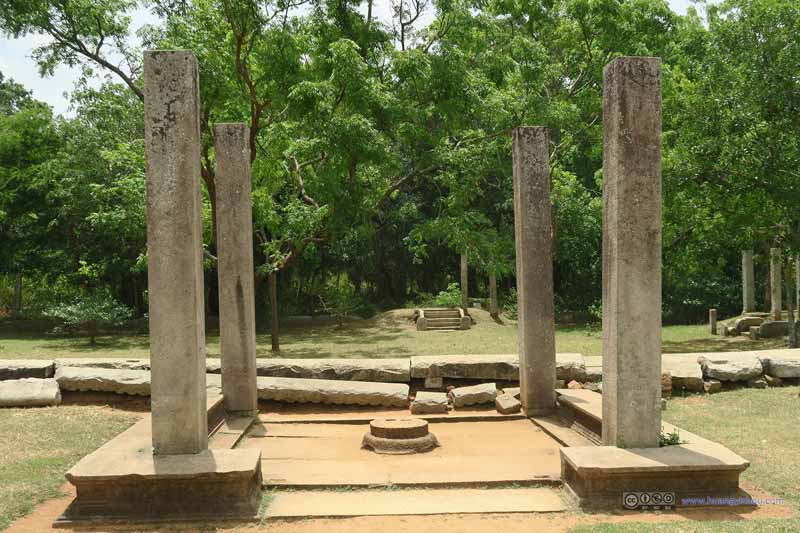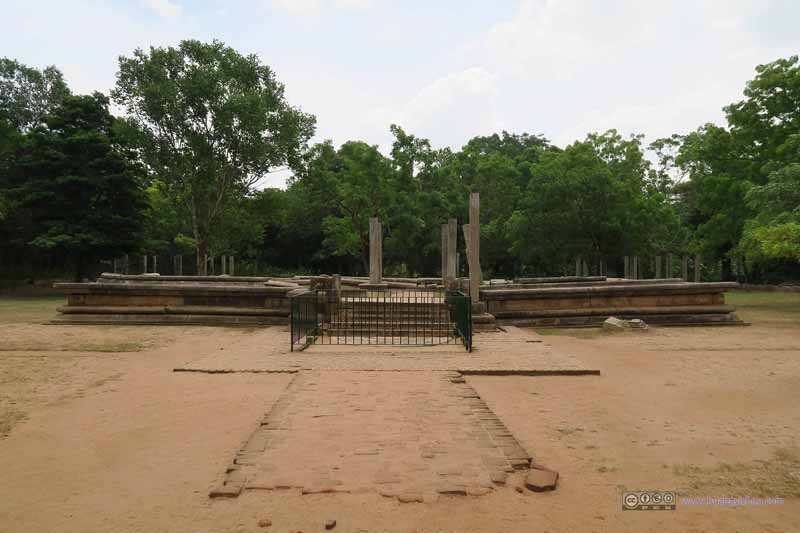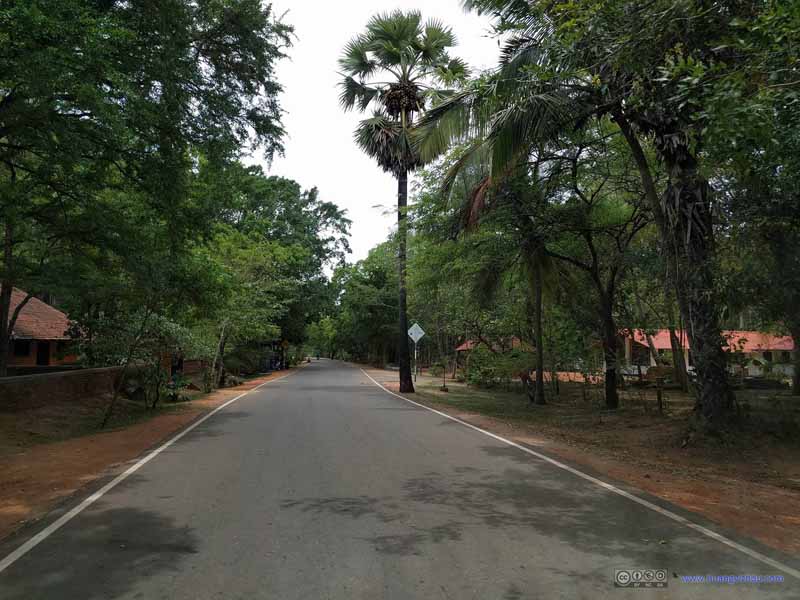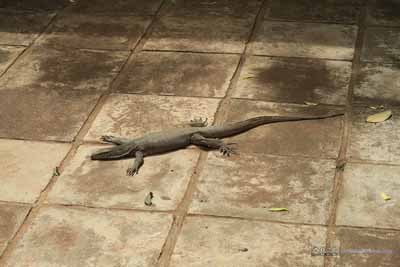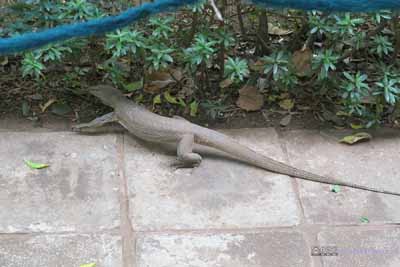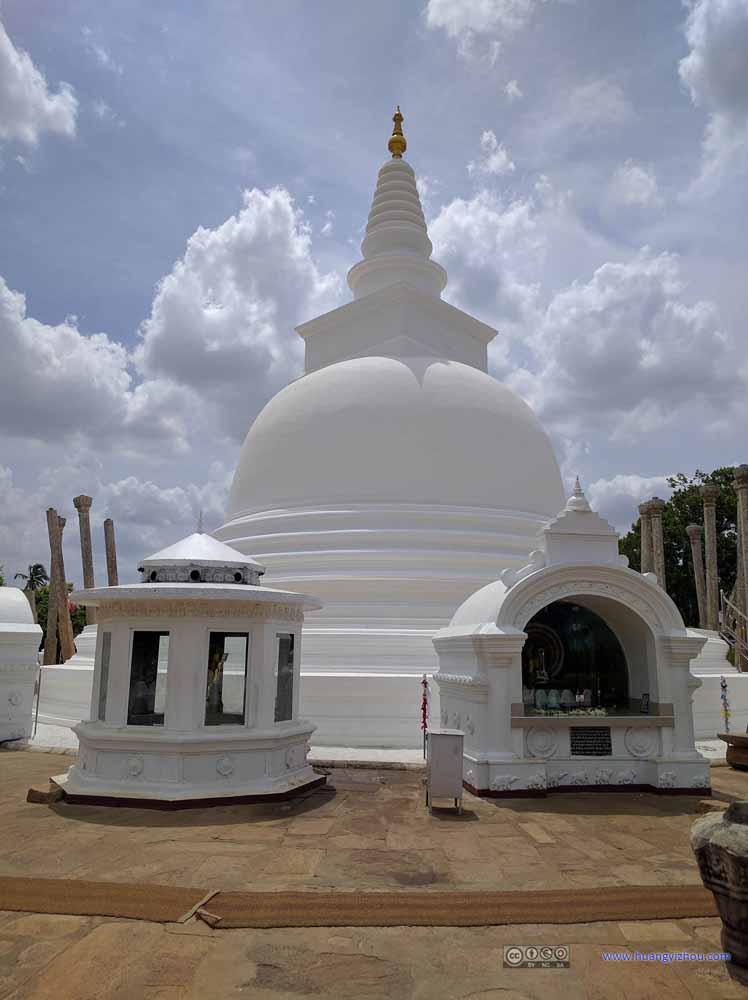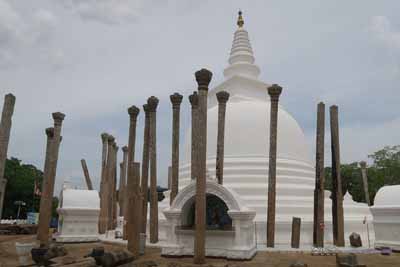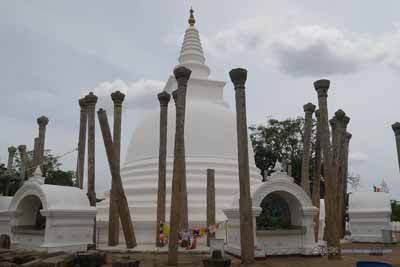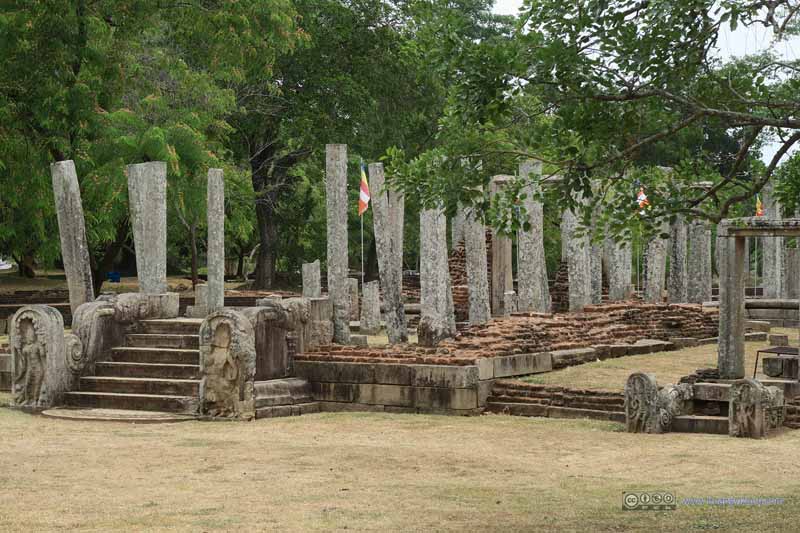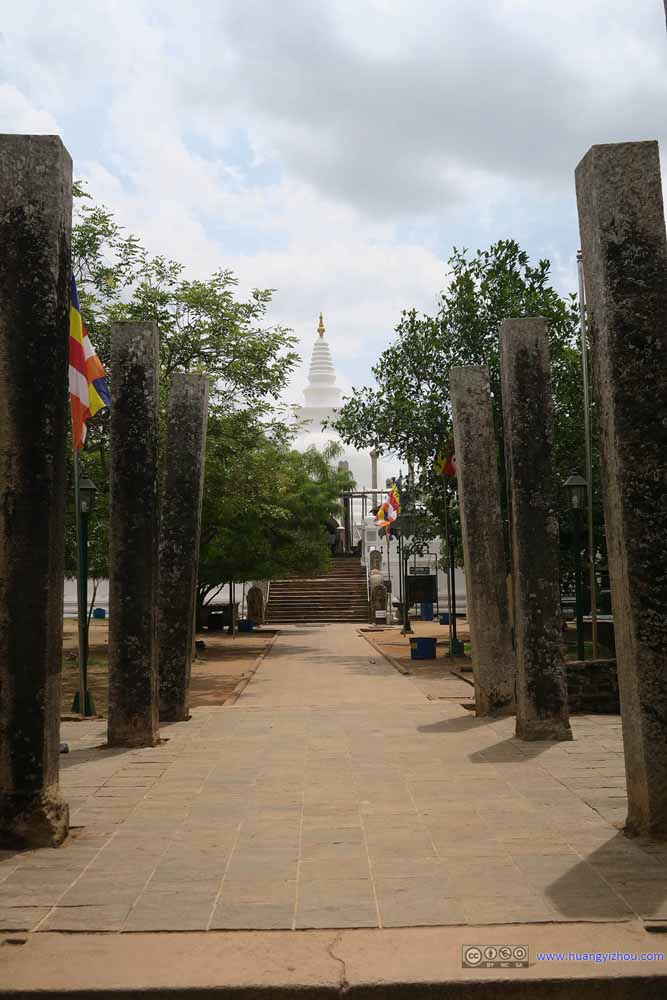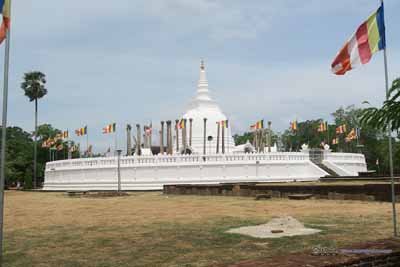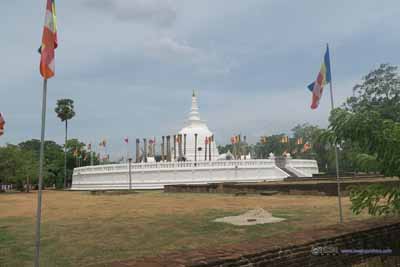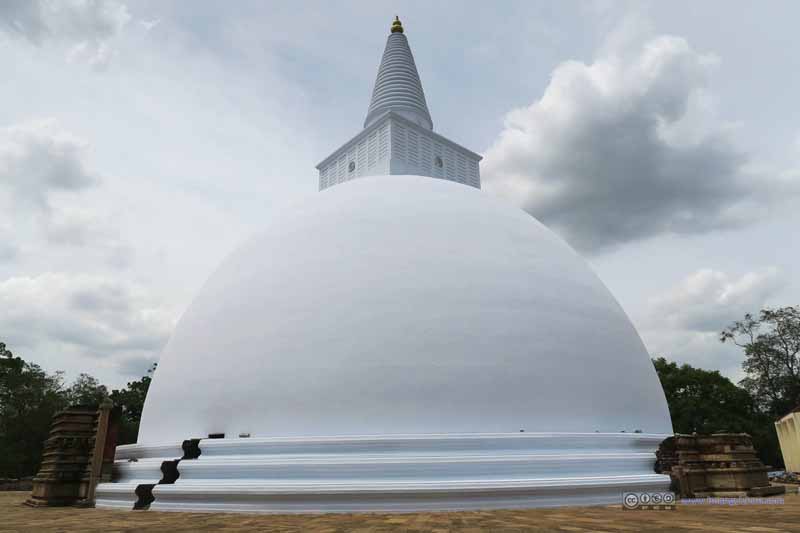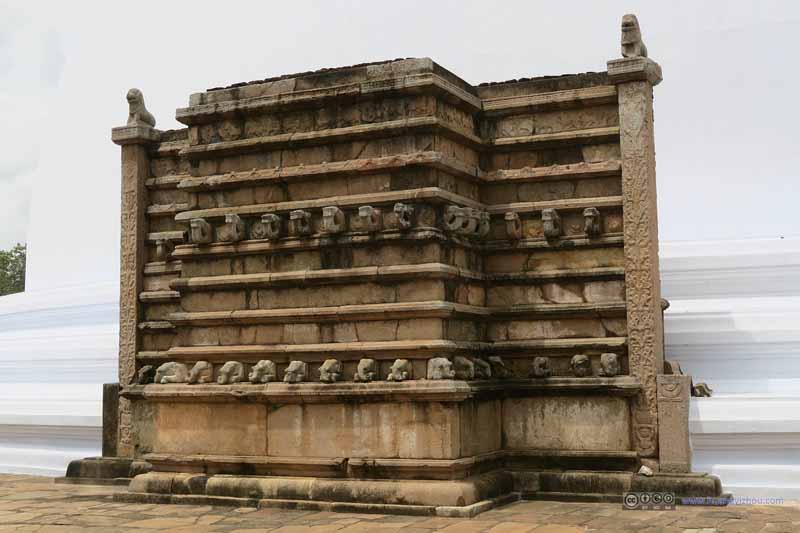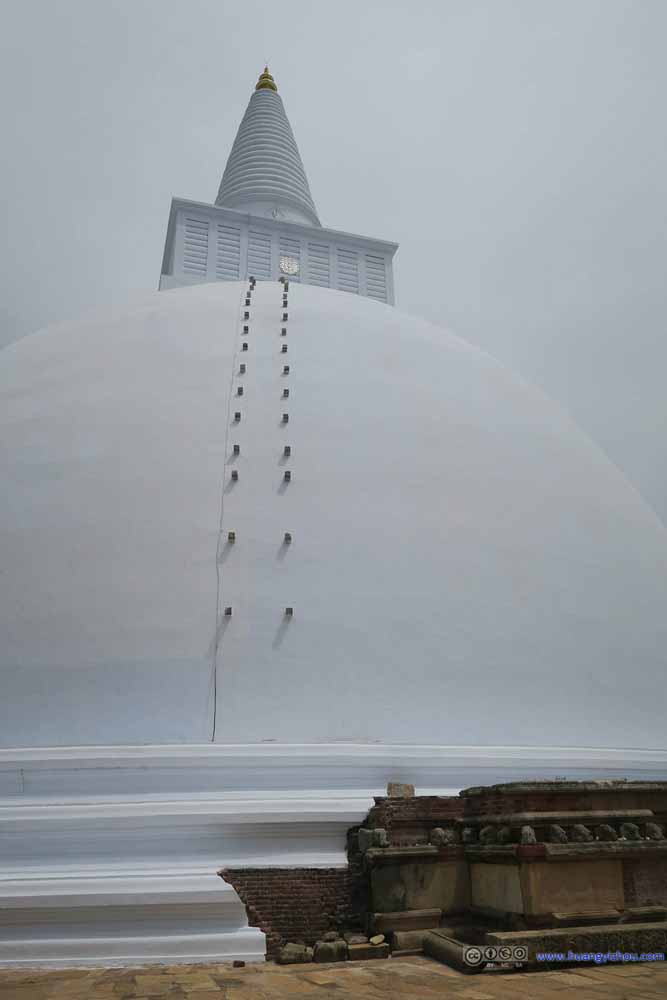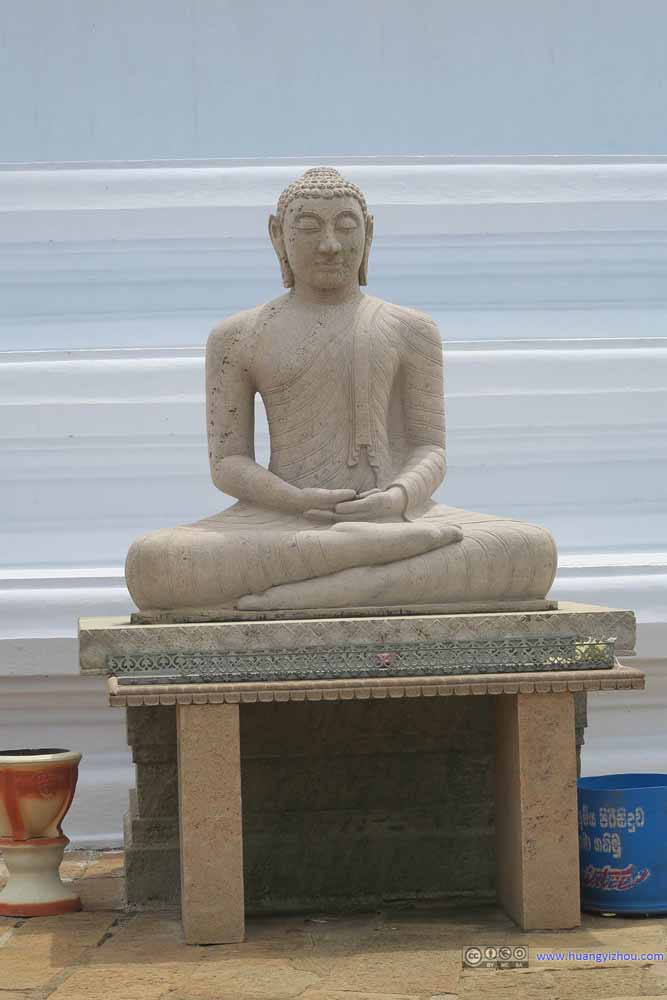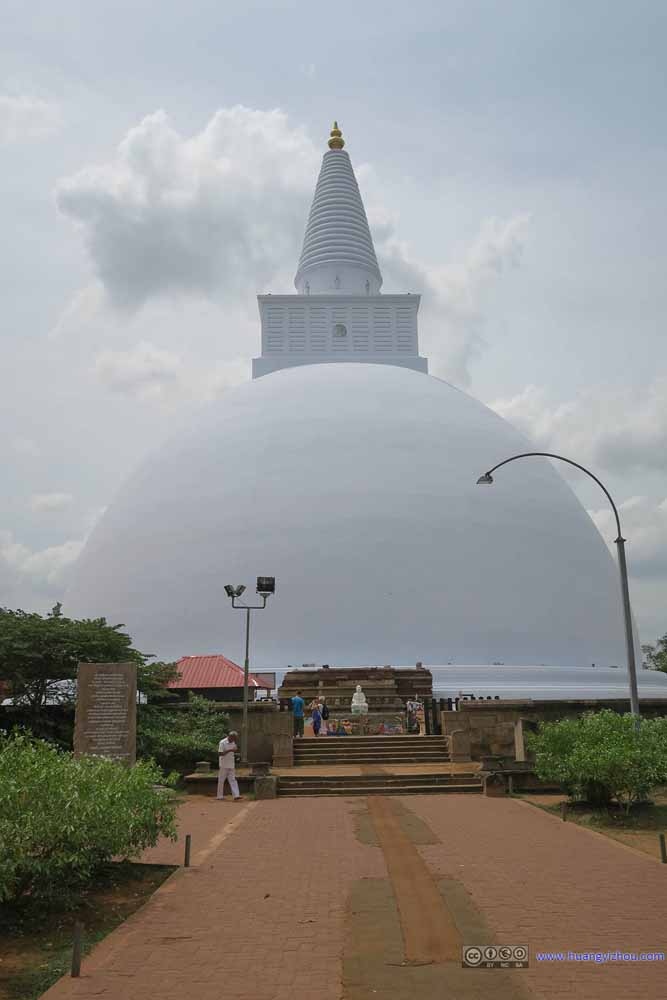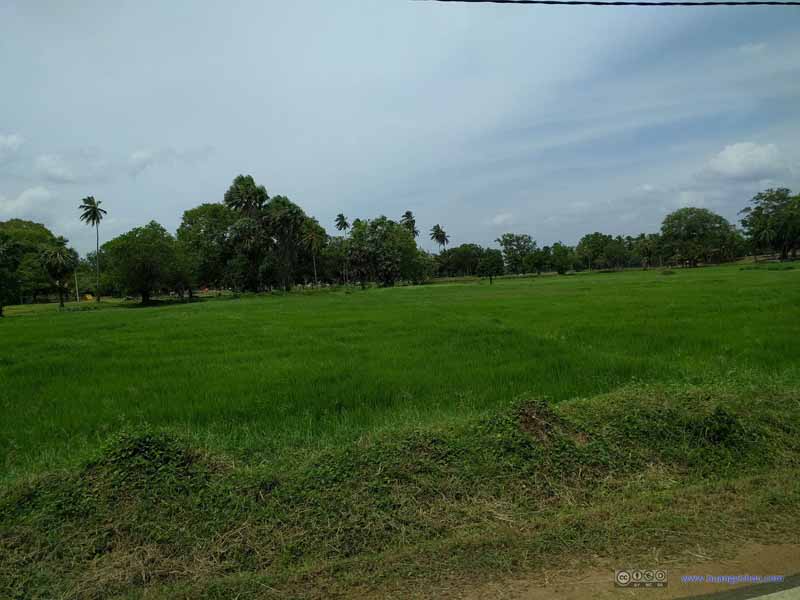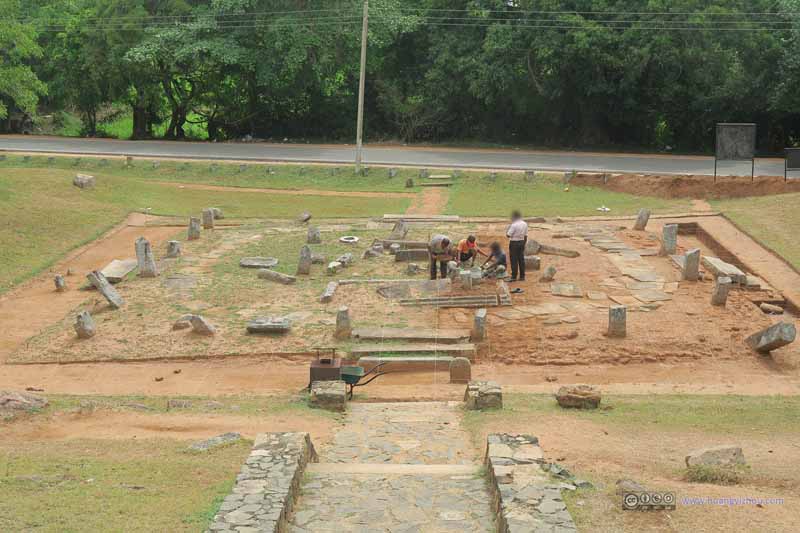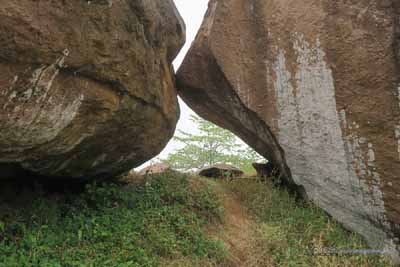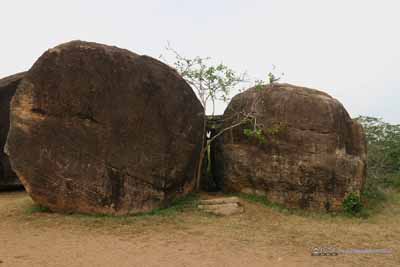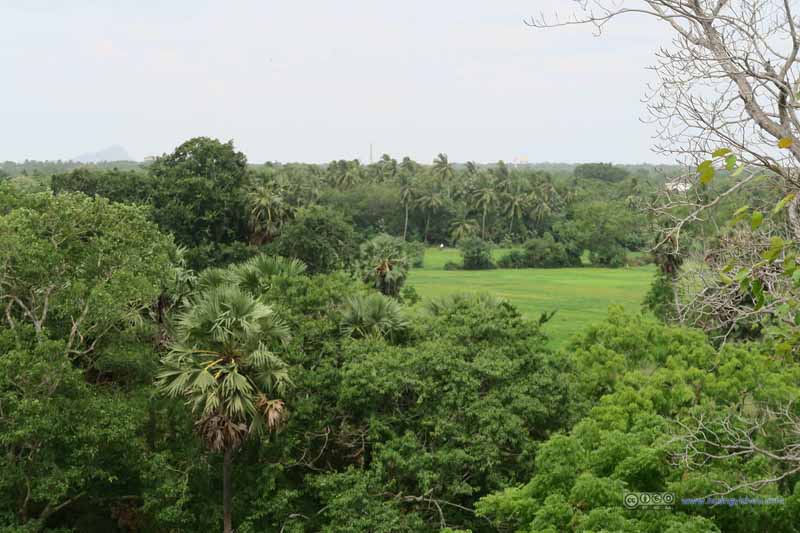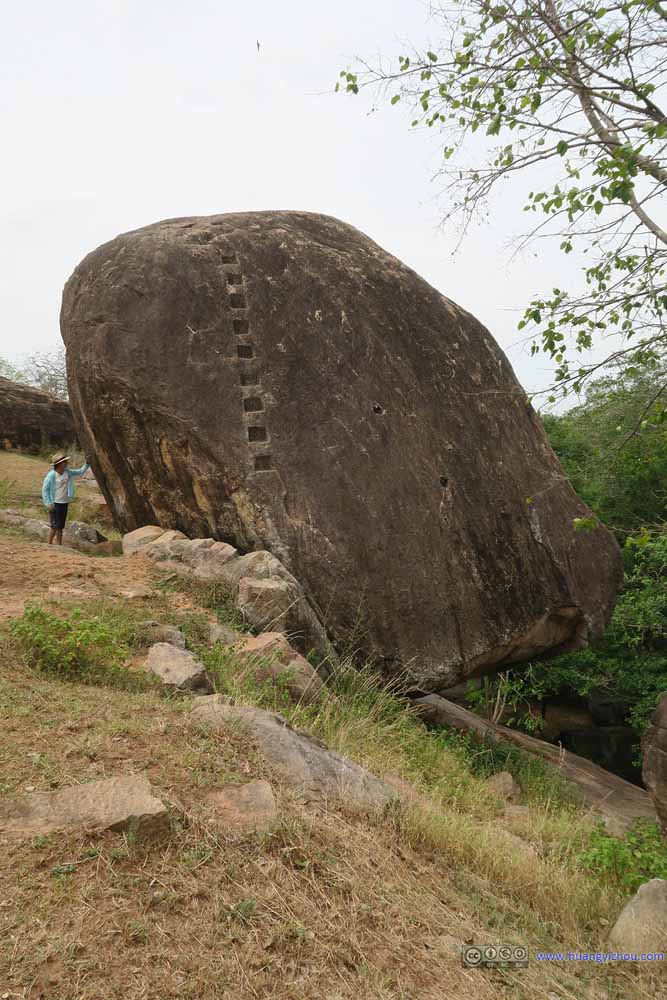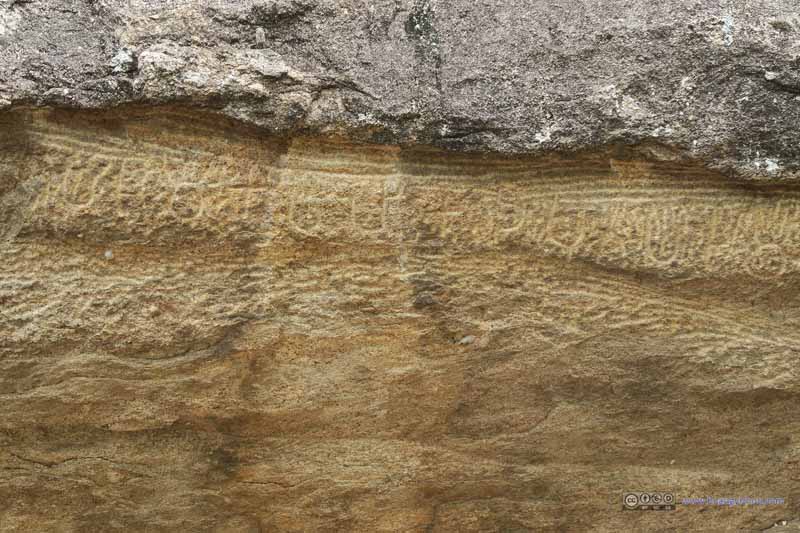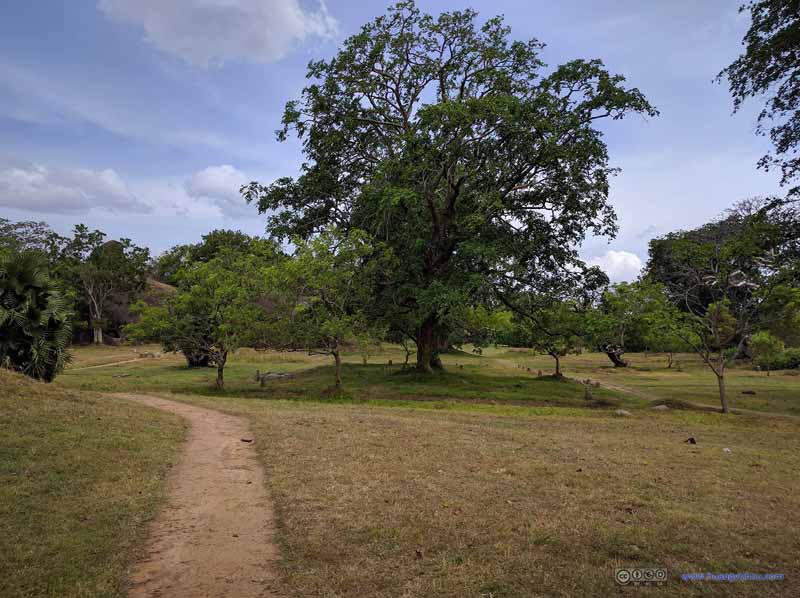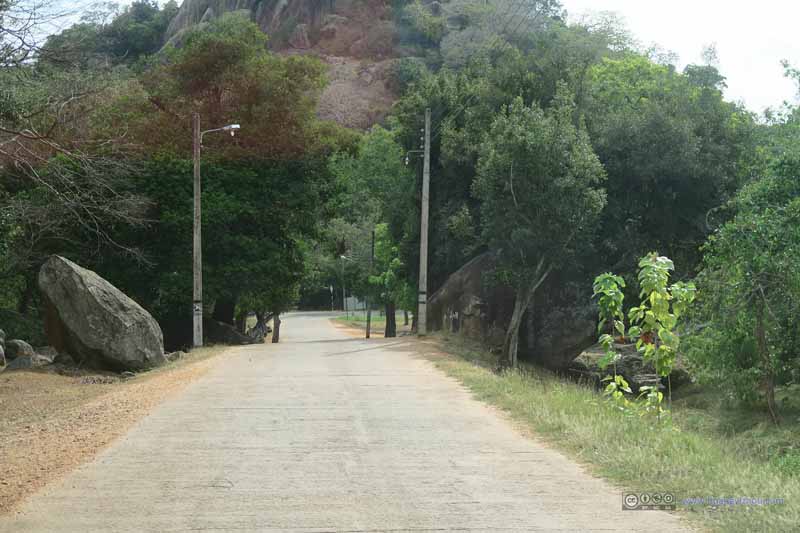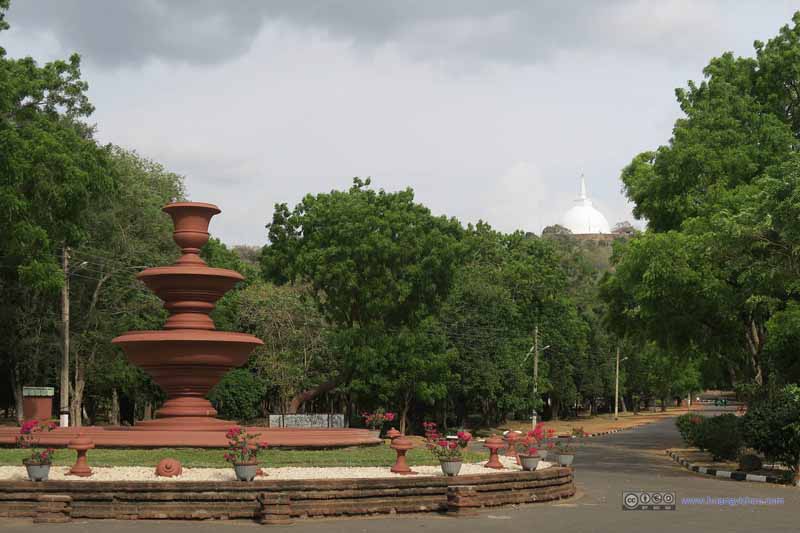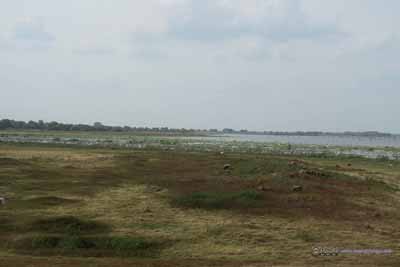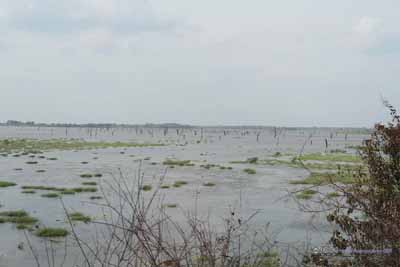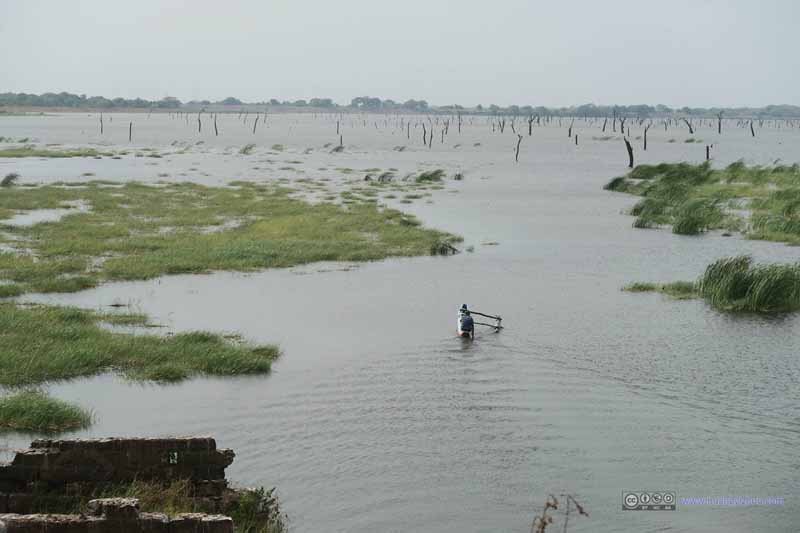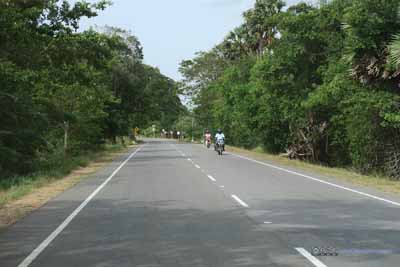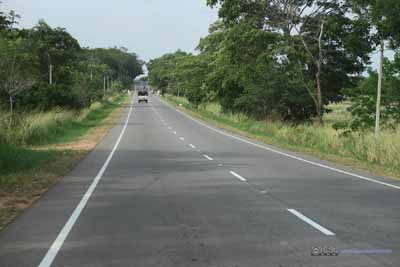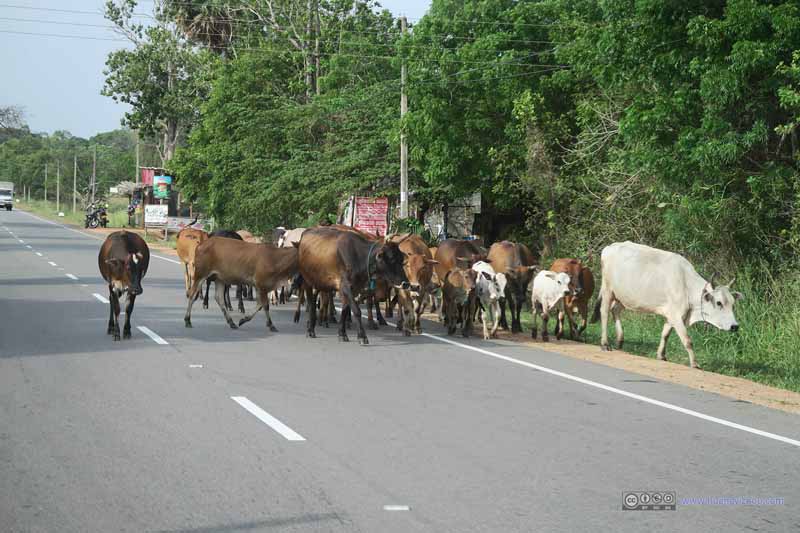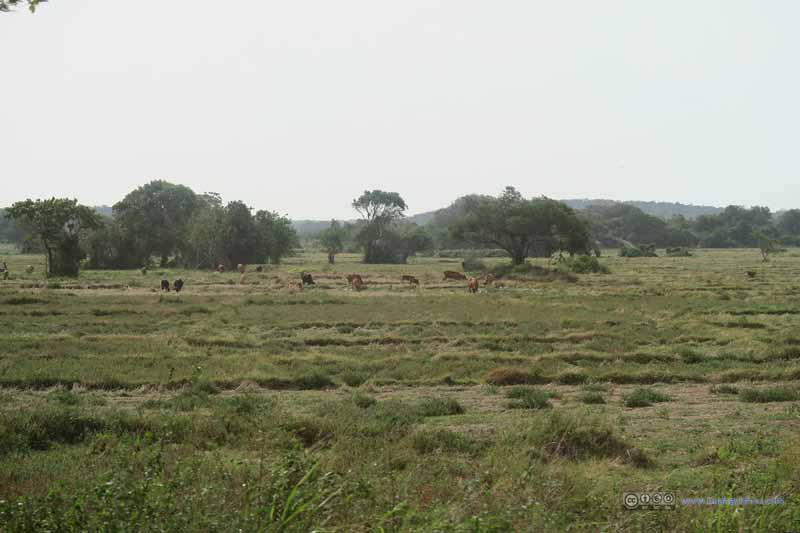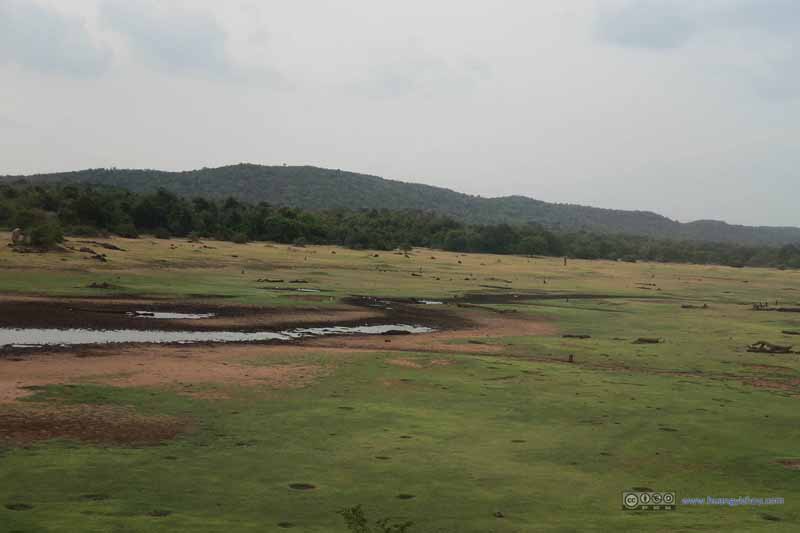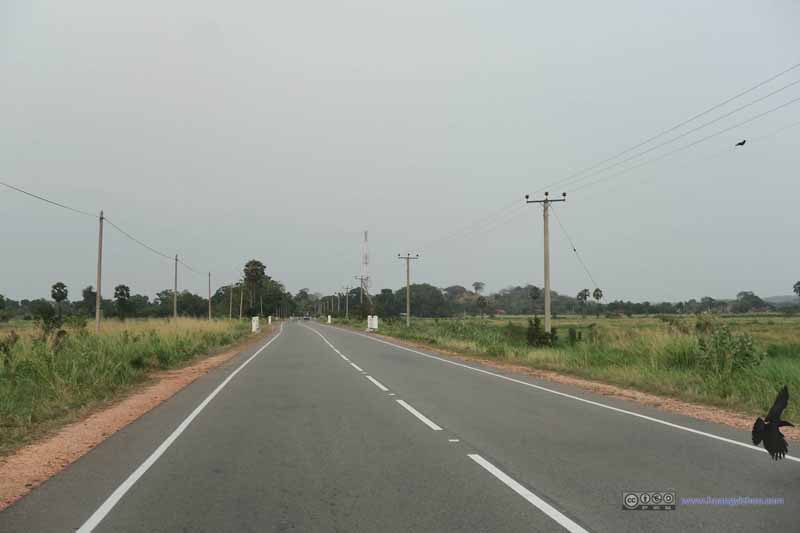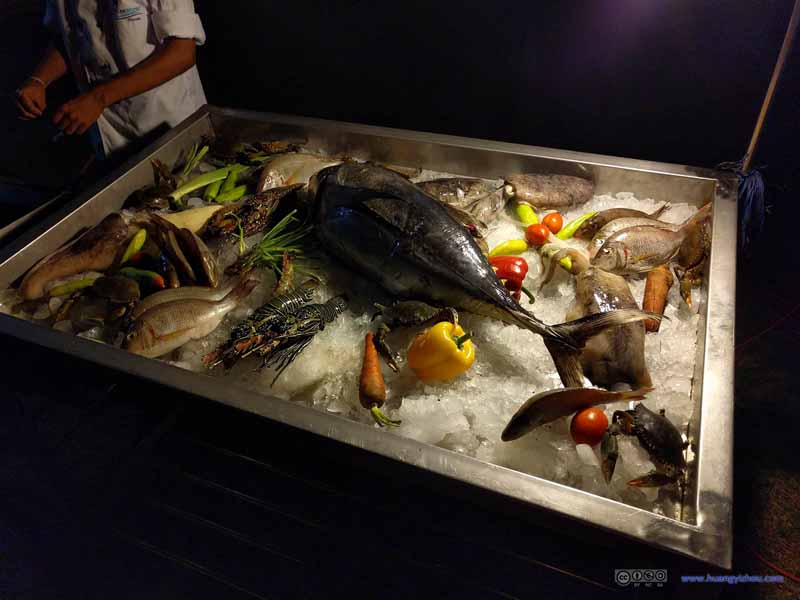Updated on May 10, 2020
Day 3 of Sri Lanka Trip, Anuradhapura on July 13, 2017
Third day of our Sri Lanka trip.
The plan of the day was to visit the temples scattered around Anuradhapura in the morning, and had our driver took us to the coastal town of Trincomalee on this country’s Eastern shore.
I had the thought of renting a bicycle and riding around ancient Anuradhapura, knowing that temple visit like this would be made up of short hops and long waits, which the car’s air conditioner won’t work effectively. But it seemed that our driver was perfectly fine driving us around the ancient ruins, so we stuck with our driver.
Which was the right call. Although riding a bike on a tarmac road in picturesque countryside could be a pleasure, it wouldn’t on this bright sunny day with scorching temperatures. Despite it’s equally hot in the car, at least a car could get us to where we wanted to be faster.
And we didn’t know where to rent a bike either.
By the way, collective tickets for foreigners at Anuradhapura were 25 USD, which was magnitudes more than Sri Lankans. There were no regular ticket checkpoints among the ruins of Anuradhapura, just random checks performed by officers on patrol.
Our first stop of the day was Ruwanwelisaya Stupa.
Ruwanwelisaya Stupa
The Ruwanwelisaya is a stupa in Sri Lanka, considered a marvel for its architectural qualities and sacred to many Buddhists all over the world. It was built by King Dutugemunu c. 140 B.C., who became lord of all Sri Lanka after a war in which the Chola King Elara, was defeated. Unfortunately the stupa wasn’t completed before King Dutugemunu passed away, His brother, the king Saddhatissa, completed the remaining work. When it’s built, the Stupa was more than 100 meters in height. But after war and natural disasters, today’s renovated stupa was 55 meters in height.
Ruwanwelisaya Stupa was the most visited temple in Anuradhapura by locals, apart from the all-important Maha Bodhi. I guessed this has something to do with this temple was directly ordered by a Sri Lankan King.
Probably due to its visitor volume, Ruwanwelisaya Stupa was the only temple of the day that had got a staffed shoe storage stand (at 20LKR each). For the other ruins at Anuradhapura, we just leave our shoes unattended at their entrance, which didn’t turn out to be much of a problem.
By the way, the temple grounds were hot and it could get really uncomfortable to walk on them barefooted. I just wondered why this wasn’t a problem for local people.
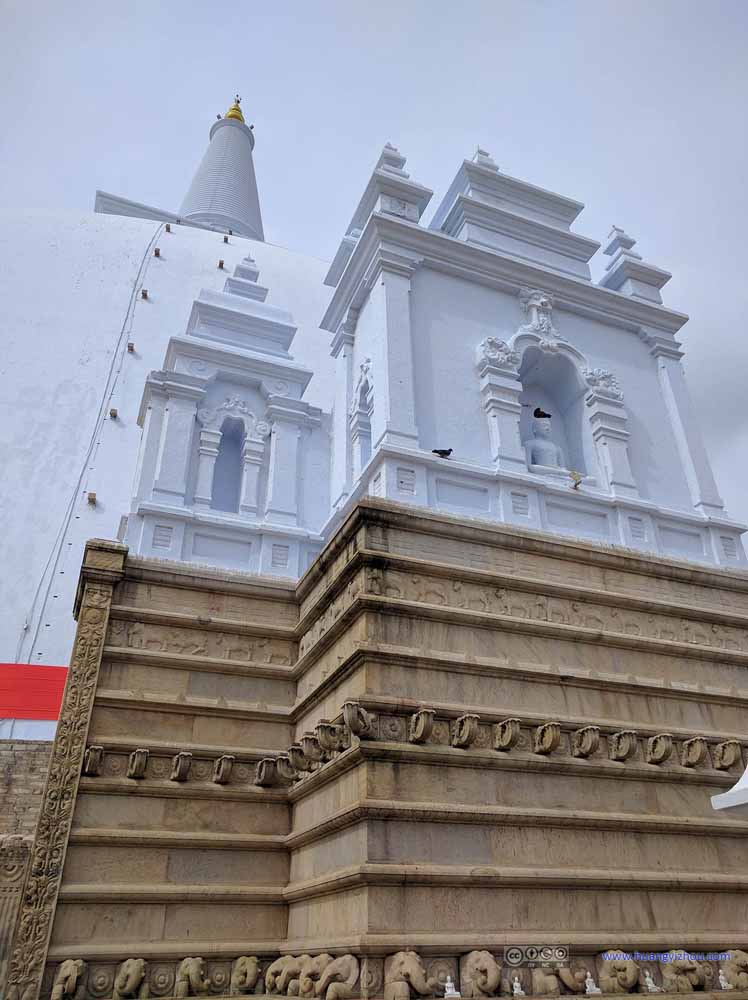
Details of Ruwanwelisaya StupaAmazingly, I found these poles sticking out of the Stupa. Guess that’s how workers climbed up the Stupa in the middle of the night doing maintenance.
Funerals in Sri Lanka were truly “public” events, as strangers were welcome to touch the offerings held by relatives. They believed that in this way, bad luck or evil spirits from the living would be transferred to another world, which was especially important for my friends that weren’t dressed in white that day.
Our next stop of the day was Jethawanaramaya Dagaba.
Jethawanaramaya Dagaba
But first, our driver took us to Jethawanaramaya Museum, which was one of the two major museums in the Anuradhapura region.
Jethawanaramaya Museum
But unfortunately, most of the museum rooms were un-air-conditioned, so it wasn’t a very nice experience visiting this museum and we didn’t spend much time here.
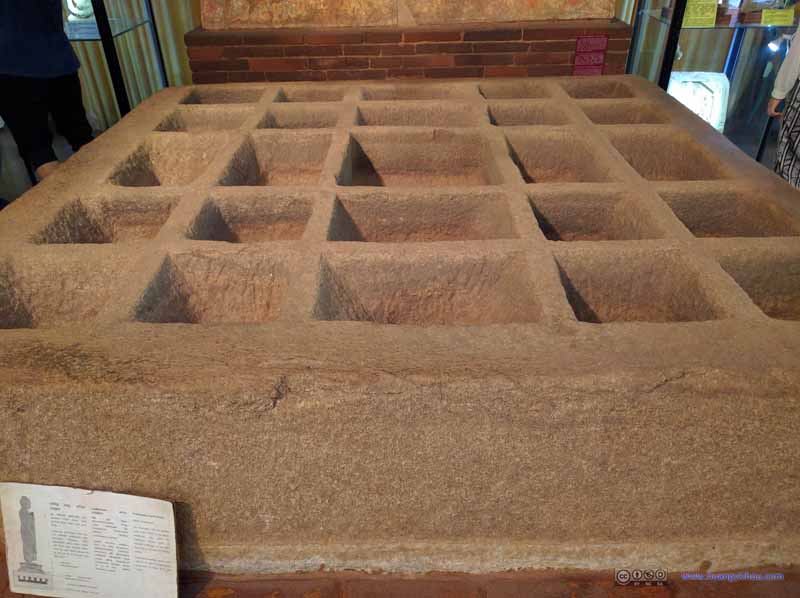
Relic ContainerGold was usually stored and offered under Buddha Statues. This container goes between the treasure and the statue so as to ward off grave raiders.
Until my friends came across this “visitor book” area (sort of), and they began to appreciate paintings from around the world while trying to scribble Sri Lankan characters.
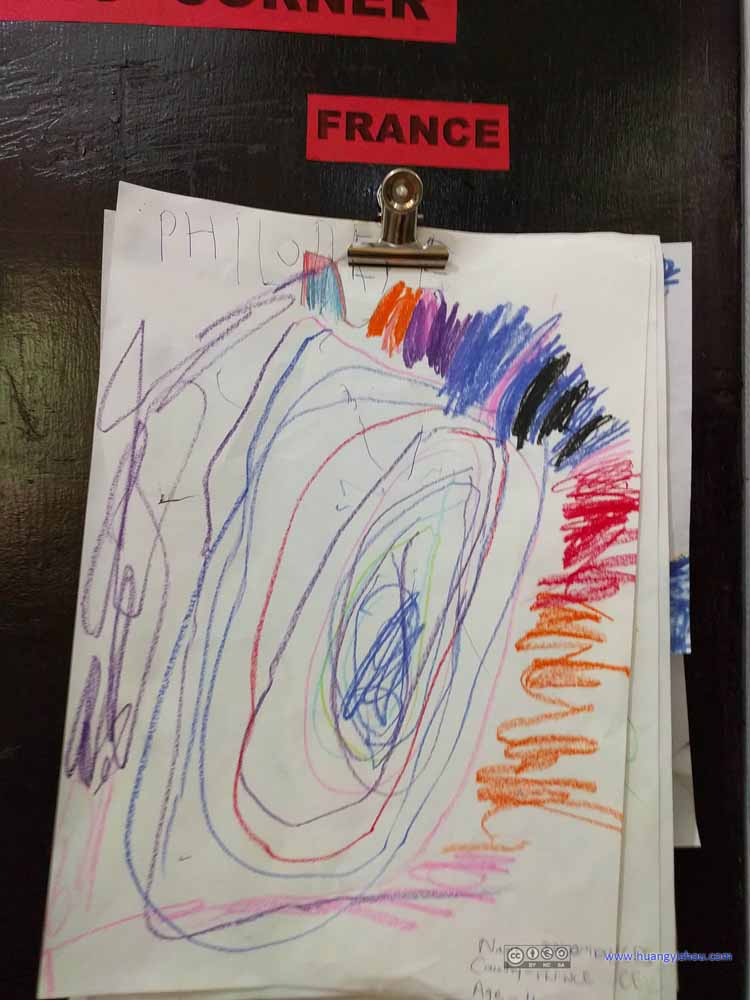
Children Painting, FranceJethawanaramaya Museum encouraged child visitors from around the world to paint the relics of Anuradhapura. While children from rest of the world at least painted something similar, none of works from the abstractionism France could I appreciate.
Obviously this museum was converted from some buildings in the colonization period.
The Jetavanaramaya is a stupa located in the ruins of Jetavana in the city of Anuradhapura. Mahasena of Anuradhapura (277–304) initiated the construction of the stupa following the destruction of the mahavihara. His son Maghavanna I completed the construction of the stupa. A part of a sash or belt tied by the Buddha is believed to be the relic that is enshrined here.
The structure is significant in the island’s history for it represents the tensions within the Theravada and Mahayana sects of Buddhism; it is also significant in recorded history as the second tallest non-pyramidal buildings after Pharos (lighthouse) of Alexandria; the height of the stupa is 122 m, or 152 m when taken into account the crystal top, making it the tallest stupa in the ancient world, despite that currently it only measured 70 meters in height.
There’s this small temple/museum in front of Jethawanaramaya Dagaba, telling the stories of construction of Jethawanaramaya, and its latest renovation just decades ago.
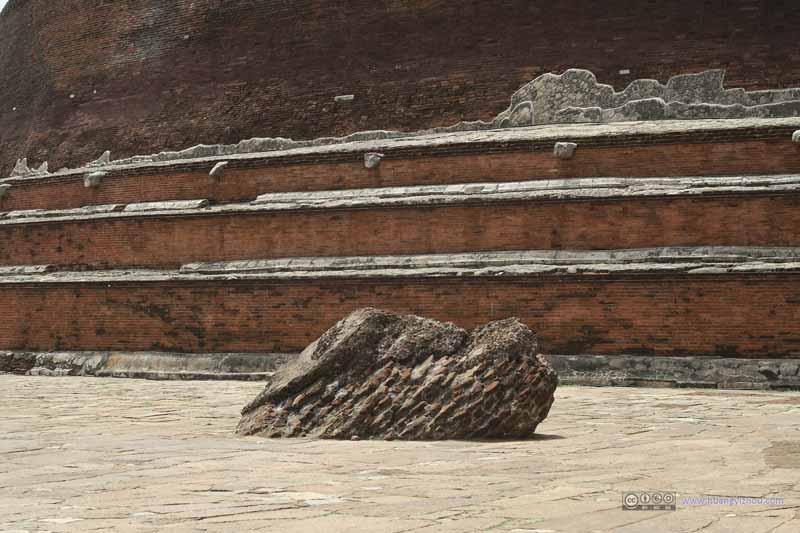
Stone Scattered around Jethawanaramaya DagabaIt could be that the stones of Jethawanaramaya Dagaba were falling apart after the ages.
Then, our driver reminded us that, there’s this remains of image house built in 8th Century, right next to Jethawanaramaya.
By the sheer height of these doorposts, one could imagine the size of the Buddha statue once being worshipped inside.
Our next stop of the day was Twin Ponds.
Abhayagiriya Monastery
Abhayagiri Vihāra was a major monastery site of Mahayana, Theravada and Vajrayana Buddhism that was situated in Anuradhapura, Sri Lanka. It is one of the most extensive ruins in the world and one of the most sacred Buddhist pilgrimage cities in the nation. Historically it was a great monastic centre as well as a royal capital, with magnificent monasteries rising to many stories, roofed with gilt bronze or tiles of burnt clay glazed in brilliant colors.
Here’s a map of Abhayagiriya Monastery, from Wikipedia.
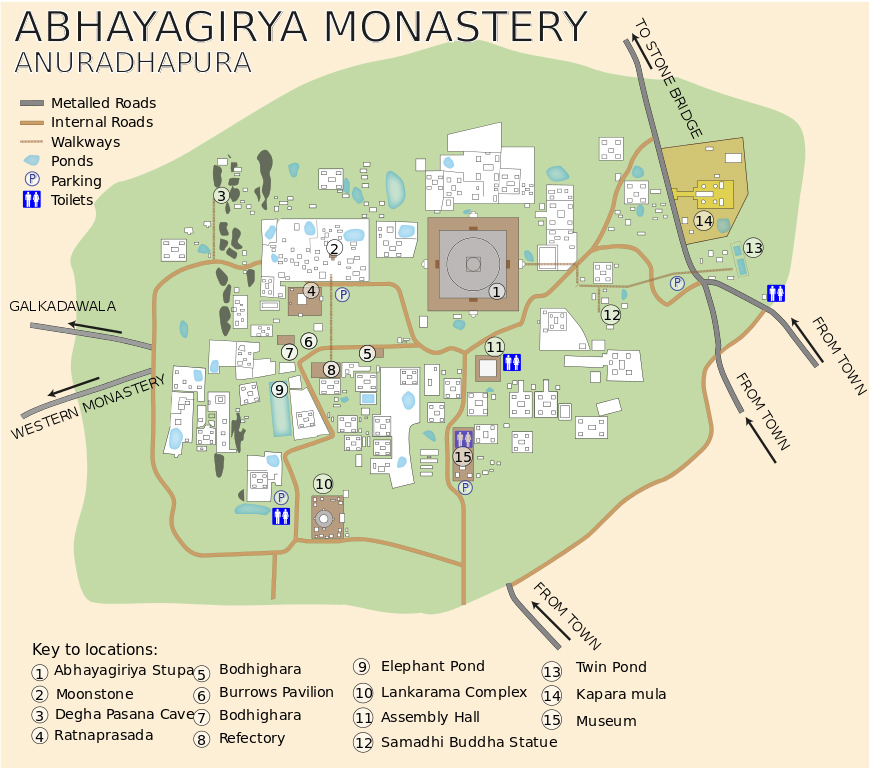
Twin Ponds
One of the best specimen of bathing tanks or pools in ancient Sri Lanka is the pair of pools known as Kuttam Pokuna (Twin Ponds/Pools). Water entered the ponds from the mouth of “Makara” by the North pond, which was then connected to the South pond through an underground tube.
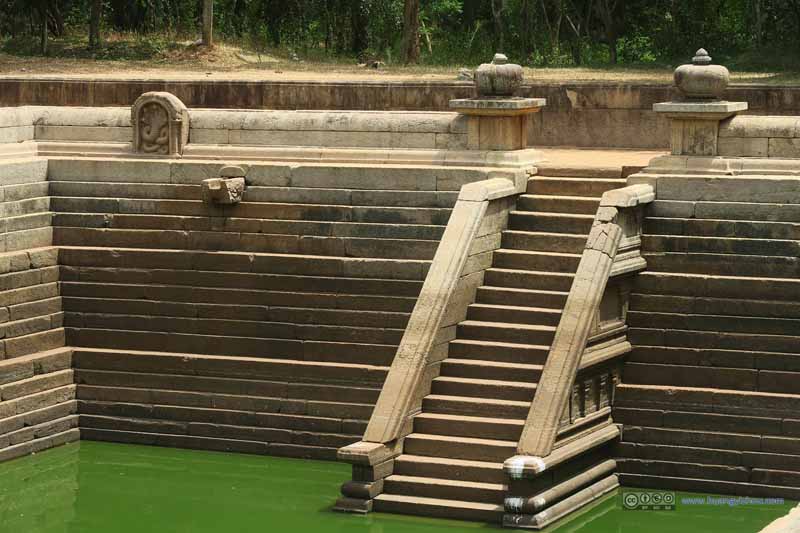
Stairs down Twin PondsThe water inlet was modelled after “Makara”, a mystical creature combining features of different animals. There’s a relief of five-headed cobra near it.
Samadhi Buddha Statue
The Samadhi Statue is a statue situated at Mahamevnāwa Park in Anuradhapura constructed in the 4-th century. The Buddha is depicted in the position of the Dhyana Mudra, the posture of meditation associated with his first Enlightenment. Roof was later added to the statue. This statue is 8 feet in height and carved from granite.
One thing not so good about this Samadhi Buddha Statue was that, its visitor entrance and exit were different, so we needed to carry our shoes with us for some distance as this was considered some “shoes-off” sacred ground.
Then our next stop of the day was Abhayagiri Dagaba.
Abhayagiri Dagaba
Abhayagiri Dagaba was established by King Valagamba during the period of his second reign, from 89-77 BC. This colossal dagoba was the ceremonial focus of the 5000-strong Abhayagiri Monastery. Abhayagiri Dagoba had an original height of 110 meters, and after several reconstructions, it still soars 75m above the forest floor today as one of the best preserved stupa’s in the Anuradhapura region.
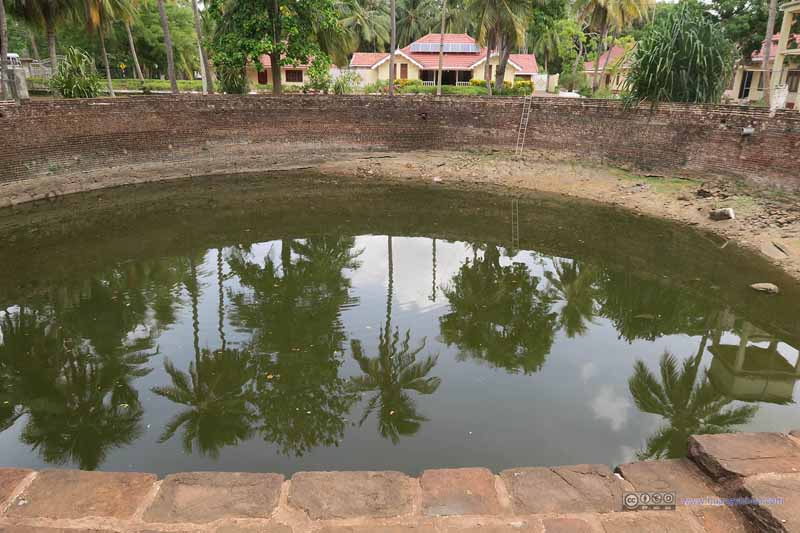
Water Tank for Abhayagiri DagabaThe size of this water tank spoke of how large the monk population used to be here.
Abhayagiri Refectory
Not far from the Dagaba it’s the Refectory for Abhayagiri Monastery, a giant dining hall with remains of food storage facilities.
But this refectory didn’t seem to be able to accommodate even a fraction of the 5000 monks that used to live here. Guess there were other dining facilities scattered around the monastery.
Elephant Pond
The largest artificial tank in Sri Lanka with a length of 150m and width of 50m and depth of 10m. Some say this was purely Abhayagiri Monastery’s water storage facilities, other say this is a pond for elephants to take shower.
Ratna Prasada
This is the Uposatha house of the Abhayagiri Vihara Complex built by King Kanitta Tissa (192-194 AD). Until recently this site was called the elephant stable due to the monolithic pillars on the site. The intricate guard stone at the inner entrance to the building is one of the best examples of such carvings in the Anuradhapura Era.
Lonely Planets mentioned stories of low-ranking monks here sheltered political dissidents in the 8th century.
Moonstone

MoonstoneThe carvings of the semicircular stone slab were the same in every sandakada pahana (moon stone). A half lotus was carved in the center representing peace of afterlife, which was enclosed by several concentric bands. The first band from the half lotus is decorated with a procession of swans, followed by a band with an intricate foliage design known as liyavel which represents desire. The third band has carvings of four animals; elephants, lions, horses, and bulls. These four animals follow each other in a procession symbolizing the four stages in life: growth, energy, power and forbearance. The fourth and outermost band contains a carving of flames, usually interpreted as representing a fire altar.
Abhayagiri Museum
The Chinese-funded building commemorates the 5th-century visit of Chinese Buddhist monk Fa Xian to Anuradhapura. Fa Xian spent two years (412–13 AD) living at Abhayagiri, translating Buddhist texts that he later carried back to China along the Silk Route.
Under the advice of our driver, we made Abhayagiri Museum our next stop of the day. This wasn’t a very large museum, consisting of ancient relics as well as information boards about structures in Abhayagiri Monastery. What interested us most was actually the creatures that roamed this museum ground.
After that, our driver drove us to Thuparamaya.
Thuparamaya
Thuparamaya is considered to be the first dagaba built in Sri Lanka following the introduction of Buddhism by King Ashoka of India in 3rd Century BC. This is considered the earliest monument in Sri Lanka, the construction of which was chronicled. It’s said that the right clavicle of Lord Buddha was stored here. This dagoba was destroyed from time to time. The current one was built in 1840, whose compound is paved with granite and there are two rows of stone pillars around the dagaba.
Compared with other stupa’s in the city of Anuradhapura, Thuparamaya’s size was by no means magnificent. But it’s one of the few temples in Anuradhapura that were still worshipped by locals. We listened to their restful songs of praises as we ambled its ground.
Then our driver took us to Mirisawetiya Stupa.
Mirisawetiya Stupa
The Mirisaveti Stupa was built by King Dutugamunu (161 BC to 137 BC) after defeating King Elara. After placing the Buddha relics in the sceptre, he had gone to Tissa Wewa for a bath leaving the sceptre. After the bath he returned to the place where the sceptre was placed, and it is said that it could not be moved. The stupa was built in the place where the sceptre stood. It is also said that he remembered that he partook a chilly curry without offering it to the sangha. In order to punish himself he built the Mirisavetiya Dagaba.
Mirisawetiya Stupa wasn’t included in the 25-dollar collective ticket of Anuradhapura. But when we visited it, there’s no ticket office and nobody asking us for admission money.
At last, our driver took us to Vessagiriya.
Vessagiriya
Vessagiri, or Issarasamanarama, is an ancient Buddhist forest monastery built among boulders. Constructed in the reign of King Devanampiya Tissa (3rd century BC), the site was expanded during the reign of King Kasyapa (473 – 491 AD) to become home to about five hundred monks.
The Vessagiri monks lived in rock shelters that were constructed by quarrying from local materials. Today’s visitor sees only the bare stones – and not all of those, since much of the rock was later carted away and reused elsewhere. But when occupied, the dwellings were finished using wood and other perishable materials.
Apart from some giant rocks, the ruins of Vessagiri wasn’t very well preserved, and apart from the archeologists working on the site and some hidden scripts, one could hardly tell this is a historic site.
Buffet and Lunch Choice
That’s basically all of Anuradhapura that we visited. After that, our driver drove us out of town for lunch. Well, since we didn’t know much about food in Sri Lanka (and neither did Google Maps or Tripadvisor, it seemed), so we basically trusted our driver on that. For the most part we were pleased with the restaurants he took us to, but one thing we didn’t quite like were buffet restaurants in Sri Lanka.
Well, it seemed that our driver had this idea in mind that lunch had better be buffet style and dinner à la carte. With buffet lunches, one doesn’t wait for his food as everything’s prepared in advance. This is very helpful in the middle of the day when one’s pressed on time, as it takes forever for Sri Lanka restaurants to serve their dishes.
But the downside is also very obvious. For the most part, buffets in Sri Lanka were designed to Sri Lanka taste, that means they were often spicy. For my friends this was a straight “no”. The choices were frankly limited, and prices were usually higher than in standard à la carte restaurants, even for those designed (and priced) for foreigners.
So after two buffet lunches, we told our driver, no more.
Aradhana Gala
After lunch we passed the city of Mihintale which was named after its nearby mountain, where Sri Lanka King first greeted ambassadors from India carrying Buddha Tooth. There’s a huge temple complex on the mountain that our driver suggested to us. But it’s already 3:30pm and we had done a lot of walking in the day, and we needed to reach our overnight hotel at Trincomalee. So we just took a few photos outside and left.
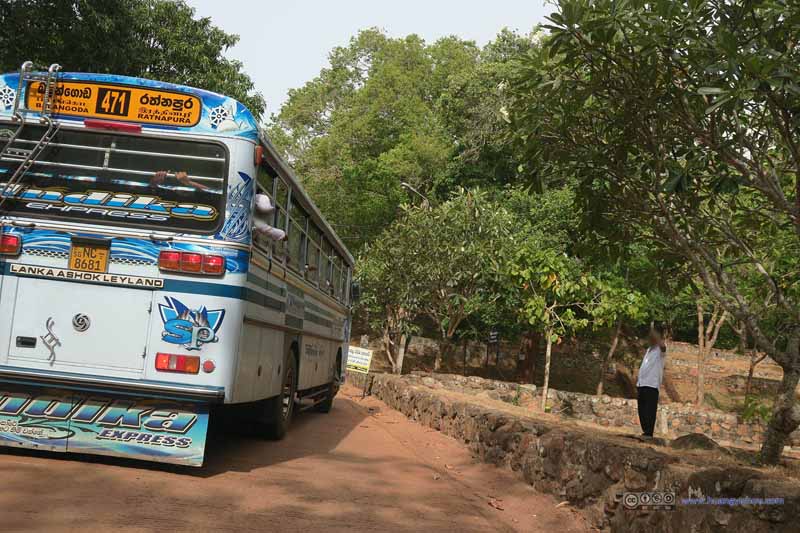
School Bus at Aradhana Gala EntranceSri Lanka schools organize quite a lot field trips. They rent buses like these to take their students to sites around the country.
There wasn’t much traffic on the country road to Trincomalee, and our driver told us that not until a few years ago these roads never existed and we were where the center of Sri Lanka’s civil war was. Just to appreciate how great peace is.
END
![]() Day 3 of Sri Lanka Trip, Anuradhapura on July 13, 2017 by Huang's Site is licensed under a Creative Commons Attribution-NonCommercial-ShareAlike 4.0 International License.
Day 3 of Sri Lanka Trip, Anuradhapura on July 13, 2017 by Huang's Site is licensed under a Creative Commons Attribution-NonCommercial-ShareAlike 4.0 International License.

